Operations
Click on the Link to go to the Operation
Israel v the RAF
Caught in the middle - air combat between Israel and the RAF
Since the end of Second World War, only six RAF aircraft flown by RAF pilots have been lost in air-to-air engagements; the most recent was on November 6, 1956 when a Syrian Gloster Meteor F-8 shot down an English Electric Canberra PR7 over Syria, killing one of the crew. The other five aircraft were shot down by a Canadian and three Americans, flying as volunteers for the Israeli Air Force, during three confused and controversial encounters between former comrades in arms in the skies over Israel and the barren Sinai desert.
The Background
Britain's active involvement in the territory that now encompasses the state of Israel began in 1917, when the British Foreign Secretary, Arthur Balfour, issued a declaration that promised a national home for the Jews in Palestine, provided this did not harm the existing population. With the end of the Second World War, as the full horror of the Holocaust was uncovered, the majority of the surviving European Jews attempted to make their way to Palestine, despite Britain's best efforts to maintain the status-quo between the Arabs and the Palestinian Jews. Britain's attempt to restrict the mass influx of Jews into Palestine during this period was to be the cause of great bitterness in the years ahead. By 1946, the 80,000 British soldiers, along with 12 RAF Squadrons or detachments in the region, became the target for Zionist terrorists. This culminated on July 22, 1946 when Irgun terrorists blew up the HQ of the British Army, located in the King David Hotel in Jerusalem, killing 91 people and injuring a further 45.
On November 29, 1947 to the horror of the Palestinian Arabs, the UN General Assembly passed the Plan of Partition by a two-thirds majority, formally dividing up Palestine and creating a home for the Jews - Britain, as the Mandatory power, abstained in the vote and was required to remove all its forces from Palestine by midnight May 14, 1948. This decision resulted in increased fighting between the Jews and Arabs that rapidly increased in bitterness. Finding themselves caught in the middle of this conflict, 208 Sqn flying Spitfire FR18s were called on to attack Jewish forces that had engaged British Army units. The British forces were glad to see the back of Palestine and by May 14, 1948 happily withdrew to established bases in Cyprus and the Egyptian Canal Zone, leaving only a small British garrison in the Haifa enclave to cover the final departure by sea of the remaining British personnel.
The War of Independence
On May14, 1948, David Ben-Gurion declared the new state of Israel whereupon the five surrounding Arab states immediately pledged to crush this emergent nation as quickly as possible. The only really effective Arab air force arrayed against Israel was the Royal Egyptian Air Force (REAF) equipped predominantly with British aircraft, the most effective being a number of Supermarine Spitfire Mk 5's and LF9's. The newly formed Chel Ha' Avir or Israeli Air Force (IAF) in comparison consisted of a ragbag collection of old transport aircraft and lacked any effective fighter aircraft whatsoever. The REAF made the most of this opportunity and mounted raids on Tel Aviv and other major towns knowing they would encounter only ground fire.
Early on the morning of May 22, 1948, the REAF attacked the RAF detachment at Ramat David airfield, where it was covering the British withdrawal, probably mistaking the airfield for one occupied by the IAF. The early morning raid caught the pilots of 208 Sqn recovering from the after-effects of an exuberant Dining-In Night, during which it had been decided to destroy the Officers' Mess to prevent it falling intact into the hands of the Israelis.
The first attack destroyed two Spitfires of 32 Sqn and damaged a number of others, but without loss of life; a second attack shot up a Douglas Dakota as it was landing, killing two of the crew, as well as destroying a hangar and killing two airmen, whilst a third attack did little damage. However, by the second attack the RAF had mounted a standing patrol over the airfield and by the end of the third attack, a total of five REAF Spitfires had been shot down, one by ground fire from two RAF Regiment Bren gunners, Sgt Atkinson and AC Waind. Fg Off Cooper and Fg Off Bowie both shot down one REAF Spitfire each and Fg Off McElhaw accounted for the two others - Cooper & McElhaw would later be involved in another incident on 7 January 1949.
The Egyptians later claimed that their aircraft had indeed mistaken Ramat David for the IAF base at Megiddo and even had the cheek to complain that their aircraft in the 2nd and 3rd raids had been shot down - understandably this incident did little to foster good relations or the exchange of information between the REAF and the RAF. On May 23, 1948, as the final elements of the RAF left Ramat David and moved to the relative safety of Cyprus and the Canal Zone, the fighting between Israel and the surrounding Arab states increased in intensity.
The 1st Incident
As the fighting between Jews and Arabs continued, the RAF was tasked to keep an eye on developments and soon mounted almost daily overflights of the Sinai desert and Israel using de Havilland Mosquito PR34 aircraft of 13 Sqn from Kabrit in the Canal Zone. The unknown high-flying aircraft frequently made contrails as they flew over Haifa and Ramat David that were seen from the IAF bases, and became known to the IAF as the 'shuftykeit'. Eventually, on November 20, 1948 when the 'shuftykeit' was sighted over Galilee heading in the direction of Hazor, a guitar-strumming Carolina hillbilly named Wayne Peake hurriedly got airborne from Herzliya, flying one of two IAF North American P-51 Mustang's that had recently been re-assembled following their arrival in crates from the USA. Peake was a highly experienced USAAF fighter pilot, who had flown many combat missions over Germany during WW2 and was one of a number of non-Jewish Americans who eventually flew as volunteers for the IAF.
The Mosquito PR34 VL 620, callsign Graphic III, had departed Fayid at 1100hrs on the routine overflight of various Middle East countries, including Palestine that took place every 48hrs. The intelligence gathered from these missions helped inform a plan known as 'Barter', which entailed the UK going to the aid of Transjordan under the terms of the Anglo-Transjordan Treaty. After leaving the Canal Zone, the aircraft climbed slowly towards Trans-Jordan then landed at RAF Habbaniya in Iraq to re-fuel. After departing Habbaniya the Mosquito should have climbed to maximum altitude whilst heading for northern Palestine, before turning south along the coastline allowing it to photograph various Israeli airfields. Meanwhile, after climbing up to around 30,000ft, Peake was guided towards the unarmed Mosquito by a South African volunteer pilot, Sid Cohen, who was tracking the aircraft with a pair of binoculars. However, because of a faulty oxygen system on the P-51, Peake was having difficulty seeing clearly. Finally, after struggling to find the aircraft, Peake eventually descended and intercepted the unarmed PR34, at 28,000 ft over Israel - apparently miss-identified the aircraft as a Hawker Halifax bomber.
Probably because the daily sorties over Israel had become almost routine and the RAF believed that the IAF lacked an aircraft capable of intercepting the PR34, the crew of pilot Fg Off Eric Reynolds and his navigator Fg Off Angus Love failed to spot the P-51 slowly closing from their rear. Peake finally got within range and opened fire, pouring 45 rounds into the Mosquito and observing strikes on the aircraft as well as the beginnings of a fire in the port engine. After a short second burst the guns on the P-51 jammed. Initially, the fire from the six .50 Brownings appeared to have little effect and the Mosquito continued on course. Then the aircraft turned out to sea, losing altitude to around 20,000ft probably in a futile attempt to escape, when it suddenly exploded and crashed off Ashdod, killing both the crew. Why the Mosquito was operating at such a comparatively low altitude, when it was capable of flying at 36,000ft where it would have been almost invulnerable to interception by the P-51, has never been explained. Also, considering that the P-51s had been unloaded in August, before becoming operational in October, the fact that the RAF were completely unaware that the IAF had obtained the P-51s, points to a singular failure in the British intelligence system. Finally, it is now known that ministerial approval for the overflight of various Arab countries and Israel was never sought, and these were authorised by the RAF C-in-C in theatre to provide the only real source of intelligence on activities in that area. Given the recent history of the region, it was agreed that his decision was not unreasonable, nevertheless, the CAS, ACM Tedder, ordered a halt to further overflights until the appropriate ministerial approval had been obtained.
More Fighter Aircraft Arrive
The IAF had to address its lack of fighter aircraft and slowly the first few Avia S-199s, Czech built versions of the Messerschmitt Me-109 that were purchased by Israeli agents in Czechoslovakia, began to arrive and were quickly pressed into service attacking advancing Arab forces. As the aircraft began arriving in Israel, with them also came a variety of foreign volunteer pilots, known as 'Machal' - volunteers in the War of Independence. Some were Jewish idealists with a genuine passion for defending the new state of Israel, some were adventurers who just wanted to fly, whilst others just needed a job and were not too bothered about the fairly basic pay - therefore it would not be unreasonable to describe some simply as mercenaries, although this description is always avoided by Israelis when describing the 'Machal'.
However, none of the new IAF pilots liked the Avia S-199, nicknamed "The Mule". The Mule was powered by the Junkers Jumo 211F 12-cylinder liquid cooled engine, married to a large three-bladed wooden propeller, intended for the Heinkel He-111H bomber. The combination of engine and propeller generated far too much torque and this, together with the narrow track undercarriage, made the Mule very prone to ground looping when taking off or landing. Overall, many pilots considered the Mule was almost as dangerous to themselves, as it was to the Arabs and, with the REAF quickly replacing any Spitfires they lost, the IAF knew they had to acquire a more effective fighter - like a Spitfire.
In their quest the IAF managed to build one Spitfire from scrap parts left behind by the RAF and they also acquired a number of ex-RAF Spitfire LF9s from Czechoslovakia. The Czech Spitfires had originally been supplied by Britain to form the nucleus of the new Czechoslovak Air Force. But when Czechoslovakia came under Soviet domination, they came under pressure to dispose of the aircraft and replace them with Russian aircraft; eventually a total of 76 Spitfires would be sold to Israel by Czechoslovakia. These Spitfires, along with the Avia S-199s, formed 101 Sqn of the IAF and, together with a steady influx of experienced foreign pilots, gradually increased the IAF's capability. However, the REAF were also flying Spitfire LF9s with similar markings to the IAF LF9s and RAF Spitfire FR18s and the confusion this caused was almost certainly the primary reason for the second incident between the IAF and RAF.
The 2nd Incident
On the evening of January 5, 1949 the Israeli leaders were informed that the Egyptian government had agreed to a ceasefire to take effect at 1600 hrs on January 7, 1949; due to an astonishing foul-up in communications this information was never actually passed to the British forces in the Canal Zone. However, at this stage Israeli ground forces had already advanced over the border into Egyptian territory in the Sinai.
On January 6, 1949, the AOC RAF Mediterranean and Middle East, Air Marshal Sir William Dickson, following orders from the Chief of the Air Staff, decided to continue to monitor the situation at the frontier between Egypt and Israel. As a result, 208 Sqn were told to prepare four Spitfire FR18s, to escort two Mosquito PR34s of 13 Sqn, who would undertake a reconnaissance sortie along the border. After the aircraft returned and reported that they had observed Israeli ground forces towing a captured REAF Spitfire along the Al Auja-Rafah road towards Israel, Sqn Ldr Morgan of 208 Sqn decided to task a further four Spitfires from his squadron to carry out an additional reconnaissance in this area the next day. The Spitfires were under strict instructions to avoid combat, unless they were attacked.
At 1115hrs on January 7, 1949 the four Spitfire FR18s of 208 Sqn, flown by Fg Off Geoff Cooper, the formation leader, (See Note 1) with his No 2 Pilot/II Frank Close (See Note 2), together with Fg Off Tim McElhaw and his No 2 Pilot/II Ron Sayers, got airborne from Fayid and headed for the Al-Auja-Rafah area in northeast Sinai. Despite some later reports to the contrary, the aircraft were fully armed and capable of returning fire. The formation had been clearly briefed not to cross the frontier into Israel, however, it had also been made clear that any information they obtained if they ‘accidentally’ strayed over the border somewhere along the featureless desert, would be most welcome. It should also be remembered that, as Israeli ground forces were now positioned inside the Egyptian border, any route along the Egyptian side of the actual border would, at some stage, involve over-flying territory now occupied by Israeli ground forces. As the formation approached Abu Awiegila, the aircraft split into two sections, Cooper and Close descended to 500ft, with McElhaw and Sayers acting as top cover at 1500ft.
The planned route, along the expanse of desert that constituted the Egypt / Israel border, comprised a number of turning points and it would have been very easy for the formation to have inadvertently penetrated the border. It is now clear that the formation did briefly penetrate Israeli territory, along the Al Auja-Rafah road, as it searched for the REAF Spitfire last sighted being towed towards Israel. Eventually the RAF Spitfires headed back towards the area of Rafah, inside Egyptian territory. However, the RAF formation was unaware that some15 minutes earlier 5 REAF Spitfire LF9s of 2 Sqn had attacked an Israeli armoured column in that area, setting three trucks on fire. A lack of communication between the REAF and the RAF, a result of the incident on May 22, 1948, had ensured that the RAF formation was completely unaware that REAF Spitfires would even be in the area. Attracted by the smoking vehicles and curious to discover what had happened, the four RAF Spitfires turned towards the scene of the attack. As they approached the vehicles, Cooper and Close dropped down below 500ft to take photographs of the incident, whilst McElhaw and Sayers continued to provide top cover at 1500ft.
The sound of the approaching RAF Spitfires alerted the Israeli soldiers who, fearing another attack by the REAF Spitfires, were understandably quick to open fire on the aircraft with machine guns, hitting both Cooper and Close. The Spitfire flown by Cooper sustained only slight damage and he rapidly pulled up to gain height, but Close's aircraft, which had flown very low to get good close-up photos of the burning vehicles, was badly damaged; he also pulled up to gain height but, with his aircraft on fire, he had no option but to bail out. During the descent, Close's feet got caught in the rigging lines of the parachute and he landed on his head, breaking his jaw. Cooper looking back saw Close bail out from his stricken aircraft and watched as he eventually landed some 10 miles inside Egyptian territory. Meanwhile, McElhaw and Sayers decided to drop down from providing top cover to see for themselves what had happened. Whilst the three surviving RAF Spitfires were concentrating on seeing what had happened to Close, two IAF 101 Sqn Spitfire LF9s, also alerted by the columns of black smoke from the burning vehicles, arrived on the scene.
Leading the two IAF Spitfire LF9s was a dour, highly experienced Canadian volunteer pilot, John Fredrick McElroy. McElroy's military career had begun in the Canadian infantry before he subsequently enlisted in the RCAF in 1940, initally serving with 54 Sqn. In the Spring of 1942 he joined 249 Sqn RAF in Malta, together with George 'Screwball' Beurling and during the defence of Malta he shot down five German aircraft and was awarded the DFC. He later claimed two more German aircraft over Normandy in June 1944 and one more a month later, receiving a bar to his DFC; he eventually ended the war with a total of 13 enemy aircraft destroyed. At a loose end after the war, McElroy was recruited specifically to fly the IAF Spitfires because of his considerable experience on the aircraft.
Flying alongside McElroy was an American volunteer pilot, Chalmers 'Slick' Goodlin. Goodlin had learned to fly before WW2 and in 1941 had travelled to Canada to enlist with the RCAF and join the war against the Germans. During military flying training in Canada, he so impressed his colleagues with his flying ability that they gave him the nickname 'Slick'. During WW2 Goodlin was a flight instructor in Canada, then completed a combat tour in England flying Spitfires alongside RAF squadrons, before transferring to the US Navy. Released from active duty, Goodlin joined Bell as a test pilot in 1944. Following the death in a crash of the initial Bell X-1 test pilot Jack Woolams, Goodlin accepted a lucrative verbal agreement from Bell and became, at just 23 years of age, the prime pilot for the experimental X-1. Goodlin went on to make no less than 33 flights in the X-1 between Sep 46 and Jun 47. However, in Jun 47, when the initial subsonic testing of the X-1 was complete and responsibility for further test flights of the X-1 was taken over by the US Army Air Force (AAF), they were unwilling to continue the expensive verbal contract for test flights that Bell had previously agreed with Goodlin. Aggrieved by what he considered to be a breach of faith, Goodlin quickly tendered his resignation. Following his departure, an unknown AAF captain, Chuck Yeager, immediately took over as the test pilot for the X-1, later becoming the first man to break the sound barrier in the X-1, before going on to become the most famous test pilot in history and the man recognised as possessing 'The Right Stuff'. After leaving Bell, Goodlin found himself looking for work and was eventually recruited by Joseph Berg, a Hollywood producer, to fly as a volunteer for the IAF.
Describing the encounter a number of years later McElroy stated that on the fateful day "It was pretty uneventful for the first 20 to 25 minutes of the flight. And then, all of a sudden, I said to Slick - he was on my left wing - I said, "Look at that smoke over here to the left, on the ground." It seemed to be about eight to ten miles away. We were a good 40 to 50 miles south of Faluja. It was right on the front line and there were three columns of smoke - pretty heavy black smoke - going up about 1,000ft. So I said "Come on, we'll turn and have a look at this." And as we got closer, I said "My God", we could see trucks burning, we could see a couple of light armoured vehicles and a number of jeeps. We saw no airplanes at the time. And then I saw four Spitfires going in, they were strafing. They had three vehicles on fire."
The Spitfire's flown by McElroy and Goodlin were still fitted with a fairly standard RAF radio and they heard the excited chatter of the RAF formation as they discussed the loss of Close, but failed to connect this situation with the incident they had stumbled across. Not expecting to come under attack, and preoccupied by watching Close descend in his parachute, the three RAF pilots probably mis-identified the two IAF Spitfires turning behind them as being part of their own formation. The IAF Spitfires pounced on the formation, assuming they were actually REAF Spitfires and responsible for the attack on the Israeli column. According to McElroy, "There were no markings on the Spitfires. Two of them were heading in an easterly direction and there were two that had gotten out of sight in a dive. They were diving and we lost them, so I warned Slick to watch out and we got over the convoy."
McElroy latched onto the Spitfire flown by Sayers and immediately opened fire, again according to McElroy "Slick was right beside my wing, he'd crossed over on the starboard side and I pulled another turn and turned south to see if we could pick up the other airplanes. Slick moved over to my left and just as he did I yelled, "There's an enemy aircraft at 12 o'clock, right in front of us!" They were about 3,000ft lower than us, so we stuck our noses down and Slick moved off to the left and started firing. We were right on top of them. They pulled up right in front of us and I blasted one, I guess from about 200yds and saw many explosions all around the engine and cockpit - I knocked a few pieces off his wings. They'd just pulled out of this dive, they didn't see us at all, they didn't know we were even in the area. I broke off, looked at Slick, he had disappeared from view, but I saw an airplane going down off my left, it was on fire and smoking, in a fairly steep dive around to the left."
Sayers was probably killed at the controls, as his aircraft quickly went into a power dive and hit the ground about three miles West of where Close's machine had crashed. McElroy then switched his attention to the aircraft flown by McElhaw, dropped in behind him and opened fire. According to McElroy "I took a quick look around, behind and above, nothing behind me at all and I looked over and saw another airplane off about 2 o'clock to me - just off my right and slightly below. I took one look and saw it wasn't one of ours by the markings, ours had the tails painted with big red and white stripes. I looked for the red and white tail markings of our airplanes, they were all marked the same and they showed up many miles away. It wasn't one of ours, so I dropped my sights on him, it was about 400yds and I let fly. I got strikes all over him, right down the fuselage and the engine, and I didn't wait around, I just broke off. I got a good burst in, probably about three to four seconds, which is a fairly long burst and well clobbered with cannon and the .50 calibre. I broke off, looked around, but couldn't see Slick." The first thing that McElhaw knew was a call on the R/T from Cooper saying that he had an aircraft on his tail, then suddenly his aircraft was struck by bullets along the fuselage and engine. It was quickly obvious to McElhaw that he needed to part company with his aircraft and he bailed out, landing about five-six miles west of Close's aircraft.
Whilst McElroy was shooting down Sayers and McElhaw, Goodlin engaged the final aircraft flown by Cooper. Goodlin recalled "There was a fiery explosion from John's target and my quarry poured on the coal with me in pursuit. We broke out of a sandy mist at 10,000ft, but I could not gain close proximity to the Spit 18 due to lesser power in my Spit 9. At about 16,000ft the Spit 18 rolled over and dived back towards me at an impossible deflection angle, with machine guns blazing and exhaust smoke rolling out under both wings. I immediately engaged my opponent in an old-fashioned dogfight scissors. The Spit 9 proved to have better manoeuvrability and I was able to get into an ideal firing position. I saw strikes on my opponent's engine cowl just before he rolled over and bailed out about ten miles south of Al Arish. I only recognised the RAF roundel after the Spit 18 had fired on me, when we were in the scissors engagement and I had no alternative but to fight back to save my own bacon."
Sayers remains were later recovered by Egyptian troops and buried in the desert, close to the remains of his aircraft. Cooper landed safely after suffering some wounds to his leg during the engagement and, after walking for a while, he was picked up by some Bedouins who took him to a border post manned by some Arab troops. Then after being transported by camel to Al Arish, he was handed over to the Egyptian Army, who treated his wounds before putting him on a hospital train back to Ismailia and the RAF. McElhaw and Close were captured by Israeli troops and were eventually taken to Tel Aviv for interrogation.
McElroy and Goodlin returned to Hatzor, executed a victory roll over the airfield, and landed. After they had landed, Goodlin told McElroy that the aircraft they had shot down had been British Spitfires. McElroy remembered he replied "Oh no, you're crazy. The British wouldn't be down there, that's behind our line. Now where this convoy was on fire ... where the strafing around was going, was behind the Israeli lines ... I would say, roughly three to four miles behind the Israeli front lines. And that's the first thing I knew they were even down that way. I never noticed any markings on them. I knew they weren't ours and that's all I needed." Although their colleagues were initially sceptical of their claim to have shot down three RAF Spitfire FR18s, this was soon confirmed when news of the capture of McElhaw and Close was received by telephone.
The 3rd Incident
Just after lunch, when the four 208 Sqn Spitfires had failed to return to Fayid, it was obvious that something had happened. The commanding officer of 208 Sqn quickly decided to launch another formation of Spitfires to search for the missing aircraft and understandably wanted an escort from the Hawker Tempest squadrons on the base. However, the Tempest's of 6 Sqn had only recently landed, following the return of the Tempest's of 213 Sqn that had landed sometime earlier and all the pilots had already stood down to their Mess. After some urgent phone calls a suitable number of Tempest pilots from 213 Sqn and 6 Sqn were rounded up and a rapid briefing took place whilst the planes were hurriedly prepared by the available ground crew.
Eventually at around 1500hrs, four Spitfire FR18's of 208 Sqn, led by Sqn Ldr Morgan, took off to search for the missing aircraft and, after rendezvousing with the Tempests over Fayid, they headed for the border. The Spitfires flew in the lead at 500ft, followed by seven Tempests of 213 Sqn led by Gp Capt A F Anderson, OC 324 Wg, acting as medium cover at 6,000ft, together with another eight Tempests of 6 Sqn led by Sqn Ldr Denis Crowley-Milling (See Note 3) providing rear top cover at 10,000ft. To balance up the aircraft numbers, Pilot/III Douglas Liquorish of 6 Sqn was ordered to join the 213 Sqn formation. Then, near Rafah, Anderson suddenly noticed a formation of aircraft diving to attack his section of aircraft and immediately ordered a break to starboard. However, when the 213 Sqn Tempests engaged the attacking aircraft, they suddenly discovered they were unable to return fire.
The four attacking aircraft were IAF Spitfires led by Ezer Weizman (See Note 4) a native Israeli who served in the RAF during the WW2, but only received his wings in 1945 after the war was finished. As his wingman Weizman had Alex 'Sandy' Jacobs, who was born in Palestine of British parents and who also served with the RAF in WW2. The two other pilots were American volunteers, Bill Schroeder and Caesar Dangott, both of whom had flown with the US Navy in WW2. As he dived towards the formation, Bill Schroeder singled out a Tempest flown by Plt Off David Tattersfield of 213 Sqn, a young, inexperienced pilot who had only been on the unit a couple of weeks. Tattersfield was probably concentrating on just maintaining formation and if he did see any Spitfires turning behind the formation, like Liquorish, he had every reason to assume they were friendly. Turning in out of the sun, Schroeder quickly got on the tail of the Tattersfield and opened fire. Tattersfield was probably killed instantly, as his aircraft was seen to turn over on its back almost immediately and dive vertically down to crash onto the desert floor and burst into flames.
As soon as he heard Anderson's warning, Crowley-Milling, flying top cover, led his section of aircraft down to attack the IAF Spitfires - their aircraft's guns operated correctly and they were able to return fire. However, when the Tempest pilots attempted to jettison the drop tanks they were carrying, to increase the aircrafts manoeuvrability, the lever used to jettison the tanks could not be moved. It was later discovered that the release pins were too heavily loaded to be released, because the ground crew had over-tightened the cradle arms after each sortie to ensure the tanks were held firmly in place. A general melee now took place between the remaining 14 RAF Tempests and the four IAF Spitfires - Weizman soon managed to obtain some hits on a Tempest flown by Pilot/III Douglas Liquorish. Flt Lt Brian Spragg of 6 Sqn, an experienced and highly competent pilot, (See Note 5) later recalled "My section broke, rather than turned with me, leaving me on my own. Next minute I had an Israeli on my tail. I tried to drop my tanks, but they wouldn't come off. The Spitfire turned up in front of me and I gave him three or four quick bursts." Caught up in the middle of this melee were the four Spitfire FR18s of 208 Sqn and it was soon obvious to these pilots that their colleagues in the Tempests were treating all Spitfires as hostile, until proved otherwise. A couple of the RAF Spitfire were fortunate not to be shot down by their own side, before a frantic call for all RAF aircraft to 'waggle their wings' allowed them to be clearly identified. Soon the IAF Spitfires realised the danger of their situation and disengaged, quickly retreating back over the border into Israel where the RAF aircraft were forbidden to follow, bringing an end to the engagement.
After landing at Hatzor, Weizman discovered his Spitfire had suffered some minor damage, from the guns of Spragg, but this was quickly repaired. The remaining Tempests returned to Deversoir where, despite damage to the tail fin, propeller and main spar, Liquorish managed to land his aircraft safely. It was discovered that two other aircraft, flown by Pilot/II MAR Heald and Pilot/II EG Waddington, of 213 Sqn, had also suffered damage from bullets strikes. In the subsequent discussions that took place between the RAF pilots involved, it was clear that many had confused the red-painted spinners on the Israeli Spitfire LF9s, with the red-pained spinners of the RAF Spitfire FR18s, whilst others had managed to distinguish the Israeli Spitfires, because of the red and white stripes painted on the aircraft's rudders. The next day 208 Sqn painted their spinners white, together with a white band around the rudder, however, this only made the aircraft more similar to the REAF Spitfire LF9s and would have caused even more confusion if a further engagement with the IAF had occurred.
The accidental dispatch of aircraft into a battle zone with unserviceable guns also came in for considerable criticism from the survivors of the engagement. A number of the Tempests were found to be overstressed, either by exceeding their maximum speed whilst diving away from an attack, or whilst spinning with the long-range drop tanks attached. It goes without saying that when news of the earlier loss of the four 208 Sqn Spitfires also became known, emotions amongst the RAF pilots ran very high. Before long all available Tempests and Spitfires were armed up and ready to take off and destroy any IAF aircraft they encountered, together with the airfields they were operating from. However, despite the pleas of the squadrons involved in the two encounters, AIR HQ refused to authorise any retaliation. There are persistent rumours that certain members of 208 Sqn later extracted their revenge on the IAF by shooting down any IAF aircraft they later encountered, including a number of transport aircraft, and that this was subsequently hushed-up to avoid escalating the situation. However, these rumours have never been publicly confirmed by anyone on the squadron at that time.
Back at Hatzor, many of the pilots of 101 Sqn were also decidedly unhappy with the day's events. Almost every pilot had either flown with or alongside the RAF during WW2 and the general view was that the RAF would not allow the loss of five aircraft, and the death of 2 pilots, to go unpunished and would probably attack Hatzor at dawn the following morning. That night, in anticipation of the impending attack, a number of the IAF pilots headed off into Tel Aviv to get drunk at their usual haunts, having decided that if the RAF did stage an attack then they would offer no resistance. However, not everyone adopted this policy and at dawn a number of IAF pilots were strapped into the cockpits of Spitfires, ready to repel the retaliatory attack that never appeared.
The Aftermath
The British reaction to these incidents was supplied by the Foreign Office, who forwarded to the Israeli government a demand for compensation for the loss of personnel and equipment in the incidents. (See Note 6) Even the Air Ministry was only slightly more robust and issued the following statement "In view of these unprovoked attacks, our aircraft have now been instructed to regard as hostile any Jewish aircraft encountered over Egyptian territory" - a classic example of bolting an empty stable door. The day after the attack the pilots of 101 Sqn sent a message to 208 Sqn as follows: "Sorry about yesterday, but you were on the wrong side of the fence. Come over here and have a drink sometime. You will see many familiar faces." Considering that the unprovoked attacks by 101 Sqn had cost the lives of two RAF pilots, together with the loss of four aircraft, it was hardly surprising that the RAF pilots involved failed to take such a light-hearted view of the incident. A subsequent RAF investigation confirmed that all four Spitfires of 208 Sqn had crashed within 3nm of a point 15nms west of the border with Israel, well within Egyptian territory. However, when an RAF salvage team arrived, they could only find the wreckage of the Spitfires flown by Cooper and Sayers. It was later confirmed by local Arabs that the Israel's had visited the four crash sites, removed various parts and then buried the other aircraft. It was assumed, correctly, that the Israelis had captured the two missing pilots and taken them back over the border into Israel.
The team also discovered the wreckage of the Tempest flown by Tattersfield, which had ended up north of Nirim, four miles inside Israeli territory. The Israelis had buried Tattersfield near the wreckage and his body was removed and later reburied on January 11, 1949 in the British War Cemetery at Ramleh - at the service, in a gesture of reconciliation, six members of the IAF carried his coffin. The two pilots captured by the Israelis, McElhaw and Close, were interrogated in Tel Aviv and received a number of visits from 101 Sqn pilots, including McElroy. Close was allowed to talk to various press correspondents, who quoted him as saying the formation had crossed the border into Israel. However when this was reported the Air Ministry issued a statement saying that the RAF formation were under strict instructions not to cross the frontier into Israel.
Several weeks later Tattersfield's father received, via the Air Ministry, an anonymous letter about the death of his son. In the letter (believed to have been written by Bill Schroeder who had shot Tattersfield down) the author stated that the first formation of RAF Spitfire's had been strafing Israeli troops before they were shot down. In the actual incident, he stated that the Spitfires were loaded with bombs and were heading for Israeli bases when they were attacked. It's clear that the author had confused the actions of the REAF Spitfire LF9s with those of the RAF Spitfire FR18s, and mistook the long-range drop tanks on the Tempests for bombs. Nevertheless, it's also very apparent from the tone of the letter that the author deeply regretted his role in the death of Tattersfield. Of his role in the second incident McElroy later said "We certainly regretted it. We didn't want to get mixed up with the British. However, as I've explained to many people, we were flying and fighting for the Israelis. There were aircraft, at the time it didn't matter whose they were to me, attacking Israeli vehicles and Israeli personnel. It was our job and our duty to stop it and that was the only way we could stop it. It was too bad, as I say, but we had no indication that the British were in the area."
Close and McElhaw were soon released by the Israelis and placed on a ship heading for Cyprus where they were re-united with their comrades of 208 Sqn. However, to prevent them becoming involved in another encounter with the IAF, they were quickly posted back to the UK. All those involved in the incident were required to give evidence at the official RAF Court of Enquiry into the incident, held on 27 Jan 49 at RAF Fayid and led by AVM JN Boothman ACC Iraq. Although a summary of the finding exists, in accordance with normal policy, a complete copy of the final report, with appropriate witness statements, has not been retained in the de-classified file.
The Questions
After reviewing these incidents, a number of obvious questions need to be addressed. The most obvious is whether in the second incident McElroy and Goodlin knew the Spitfires they were attacking were RAF and not REAF. On balance I think that they probably did genuinely mistake the RAF Spitfires photographing the burning Israeli vehicles, for the REAF aircraft that had actually made the attack. Goodlin has admitted that they heard "excited English chatter on the R/T", presumably discussing the shooting down of Frank Close, before they attacked, but they failed to understand the significance of what was being discussed. Although the RAF aircraft's spinners were painted in a similar fashion to the REAF Spitfires, the RAF FR18s were a much larger aeroplane than the Egyptian LF9s. However, the difference would not have been obvious at range in poor visibility, even to experienced pilots like McElroy and Goodlin and, as the formations merged, the 'red mist' of anger probably clouded any further attempt at establishing their correct identity. Goodlin has admitted that he recognised the RAF roundel on one aircraft, but only after the aircraft had fired on him and he was then forced to continue the attack to save himself.
In the third incident, a number of the pilots in the Israeli Spitfire formation must have known from the start that the aircraft they were attacking were RAF Tempests, rather than REAF Spitfires. Firstly, the Tempests were considerably different to the REAF Spitfire LF9s, although the REAF had actually 'borrowed' a single Tempest from the Iraqi's. Douglas Liquorish (See Note 7) clearly remembers seeing a formation of Spitfires pass down the port side of the 213 Sqn formation at around 7000ft, about half a mile away. He then ignored the aircraft assuming they were just another formation of RAF Spitfires and, like the rest of the formation, didn't see them turn in behind the Tempests and attack out of the sun. Secondly, it should have been obvious to the Israelis that the RAF would mount a sortie into the area in search of the missing Spitfires. Certainly, Ezer Weizman has admitted that he was "keen for just one more victory to finish up the war", and didn't seem particularly concerned which country the aircraft actually belonged to. As far as the IAF pilots involved were concerned, it appeared to be a question of shoot first and positively identify later. In Weizman's defence, given the fragile state that Israel was in and the limited number of IAF fighter aircraft, he knew that any aircraft they encountered were either Arab or RAF and probably thought that alone justified an immediate attack. However, it's stretching the imagination to believe that Weizman didn't clearly identify the aircraft as Tempests and knew full well that the aircraft belonged to the RAF - who else in that region could have put together a formation of aircraft of eight Tempests?
The loss of the RAF aircraft and pilots in the 2nd and 3rd encounters are often described as examples of the 'Fog of War', however, I believe that although the 2nd incident does fall into this category, the 3rd incident was simply an unprovoked attack. Although Weizman appears to have positively relished the opportunity to get one over on the RAF, it's doubtful that, in retrospect, all of his colleagues were quite as enthusiastic; if he was the author of the letter, then certainly Bill Schroeder deeply regretted his involvement.
Was there also a degree of arrogance in the higher echelons of the RAF who believed that nobody in the region would dare attack a formation of RAF fighters? On paper the Spitfire LF9 was no match for the Spitfire FR18 and more especially the Tempest. However, as has so often been the case in air-to-air engagements over the years, a more manoeuvrable aircraft, aggressively flown by experienced pilots staging a surprise attack, can frequently prevail against larger formations of more powerful aircraft, containing some less experienced pilots, particularly if hit and run tactics are employed. Nevertheless, in the third incident had all the Tempests been able to get rid of their drop tanks and return fire, the IAF Spitfires would not have escaped so lightly - so luck was most certainly on their side that day. The inability of the 213 Sqn aircraft to return fire was almost certainly caused by simple human error.
Although it has often been reported that it was official policy for aircraft guns to be uncocked, I have failed to discover any evidence of this order in the de-classified file (See Note 8). Certainly, we know that 6 Sqn and 208 Sqn had loaded and cocked guns, which would have contravened such an order, so I believe there is a much simpler reason. The Tempests of 213 Sqn had landed earlier than 6 Sqn and, as part of the after landing checks for obvious safety reasons, the squadron armourers would routinely have uncocked the aircraft guns. In the later rush to depart, for some unknown reason, the evidence suggests that the 213 Sqn armourers simply forgot to re-cock the guns. Luckily, as they landed later, the armourers of 6 Sqn hadn't got around to un-cocking their Tempests guns when the order to get airborne again was received and so their aircraft were able to return fire when they later encountered the IAF Spitfires.
What might have happened had the RAF been allowed to immediately retaliate against the IAF following the two incidents? Had the will been there, then there is little doubt that the RAF could easily have decimated the small embryonic IAF, destroying most if not all of their available aircraft and their aviation facilities. This in turn would have left the skies clear for the REAF and might have resulted in the war between Israel and the surrounding Arab states re-commencing, with the IAF having lost control of the skies. However, provided sufficient IAF pilots had survived an attack by the RAF, its probable that, thanks to their already well established supply chain, the IAF would have been able to quickly replace their aircraft and eventually restore their supremacy in the sky, regardless of how many aircraft had been destroyed by the RAF.
Many years later, Gp Capt Anderson probably spoke for all those involved when he expressed his expert opinion on the 3rd incident by commenting that "This fantastically misplanned operation afforded a lively illustration of how an unbeaten Air Force appears able, at the drop of a hat, to disregard every lesson learned in five and a half years of victorious total war. It was remarkable that only one aircraft was lost, considering that we were sent off unarmed to meet aircraft of greater manoeuvrability in a highly confused area of operations. It is, however, only fair to remark that nobody concerned would have willingly allowed further aircraft from 208 Sqn to enter the operational area without some form of cover - even though it was a total bluff. This presumably explains the event, even if only partially." (See Note 9)
Throughout aviation history, air-to-air engagements have frequently been confused encounters; these three incidents were no exception and nobody will ever be able to establish the precise details of what actually happened. It's rather ironic that, during the War of Independence, the RAF were attacked by both protagonists, with lives being lost as a result, despite attempting to remain neutral - the almost inevitable result of getting in the middle of someone else's war. It's also a rather surprising fact that the second REAF Spitfire shot down by Fg Off Tim McElhaw on May 22, 1948, is the last occasion that an RAF pilot in an RAF aircraft shot down another aircraft in an air-to-air engagement - an unusually long time ago, particularly considering the numerous conflicts that the RAF have been involved in over the intervening 56 years. (See Note 10)
Notes:
- Cooper retired as an Air Commodore and became the aviation correspondent for The Daily Telegraph.
- At this time in the RAF, other than the usual officer ranks, the 1946 aircrew scheme used the following other aircrew ranks: Master Aircrew equated to Warrant Officer, Pilot I equated to Flight Sergeant, Pilot II equated to Sergeant and Pilot III or IV equated to Cpl. Although the idea had some merit, it was unpopular with SNCO aircrew and was abandoned in 1950, from this point all SNCO aircrew were given the rank of Sgt on completion of their professional training.
- Later Air Marshal Sir Denis Crowley-Milling, KCB, CBE, DSO, DFC.
- Weizman became a legendary Commander of the IAF and finally the President of Israel.
- Conversation Spragg - Williamson 23 Dec 03. Flt Lt Brian Spragg had flown Typhoons with 257 Sqn in WW2, later flew F-86 Sabre's in Korea and retired as a wg cdr.
- No compensation was ever paid by Israel.
- Conversation Liquorish - Williamson - 14 Nov 03.
- PRO AIR 19/587 – Attacks on RAF PR aircraft 1949.
- Letter from Gp Capt A F Anderson DSO DFC RAF Retd to the AHB dated 16 Feb 75.
- The rumours regarding an RAF Javelin of 60 Sqn downing an Indonesian C-130, together with the 20 Sqn RAF Hunter manoeuvre kill against an Indonesian MiG-17 in the mid-1960's are both unconfirmed. The infamous 92 Sqn F4 v 31 Sqn Jaguar incident in Germany on 25 May 82 was an unintentional & uncontested blue-on-blue and therefore doesn't count!
Bibliography:
- Spitfires Over Israel - Brian Cull, Shlomo Aloni and David Nicolle - Grub Street 1994 - ISBN: 0948817747
- The Israeli Air Force Story -Murry Rubinstein and Richard Goldman -Arms & Armour Press 1979 - ISBN: 0865684626
- On Eagles Wings - Ezer Weizman - Weidenfeld & Nicolson 1976 - ISBN: 0297770349
- Fighters over Israel - Lon Nordeen - Guild Publishing 1991
- No Margin For Error - Ehud Yonay - Pantheon Books 1993 - ISBN: 0679415637
- The Israeli Air Force 1947-1960 - Salvador Mafe Huertas - Shiffer Publishing Ltd 1998 - ISBN: 0764303902
- Arab-Israeli Air Wars 1947-82 - Osprey Combat Aircraft 23 - Shlomo Aloni - Osprey Publishing 2001 - ISBN: 1841762946
- Israeli Fighter Aces - The Definitive History - Peter B Mersky - Speciality Press Publishers and Wholesalers 1997 - ISBN: 1883809150
- Air Wars & Aircraft - a detailed record of Air Combat, 1945 to the present - by Victor Flintham - Arms & Armour Press 1989 - ISBN: 085368779X
- British Combat Aircraft in Action since 1945 - by David Oliver - Ian Allen Ltd 1987 - ISBN: 071101678X
- The Spitfire Story - Alfred Price - Arms & Armour Press 1982 - ISBN: 0853688613
- Wings in the Sun - ACM Sir David Lee - HMSO Publications 1989 - ISBN: 0117726206
- Into the Unknown - The X-1 story - Louis Rotundo - Airlife 1994 - ISBN: 1853105260
Shlomo Aloni, Roy Bowie, Dave Bush, Chief Tech D M Collins 6 Sqn, Brian Cull, Douglas Liquorish, Flt Lt Dom Pearson 13 Sqn, Chris Pocock, Ian Sheeley, and Brian Spragg, however, responsibility for the accuracy of the article and the views expressed is mine alone.
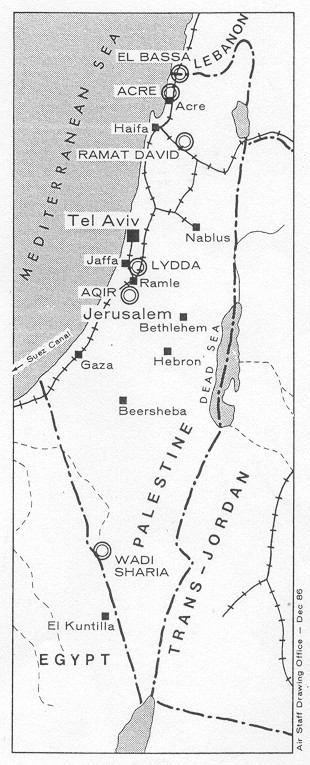
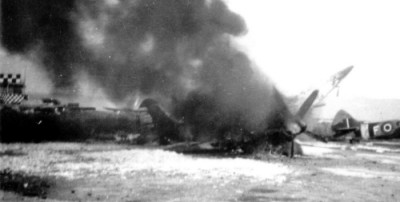
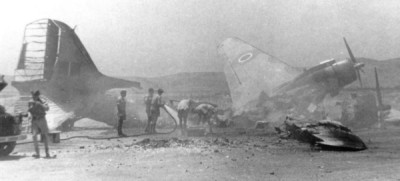
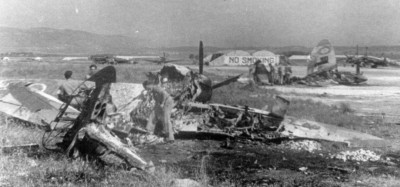
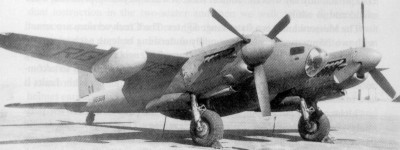
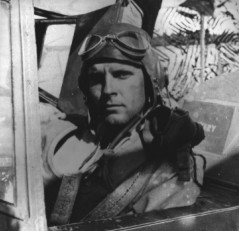
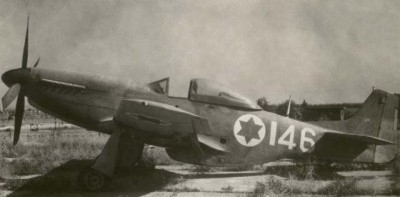
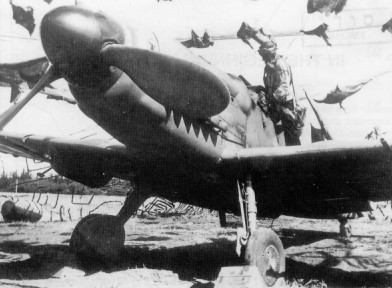
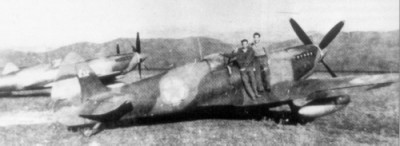
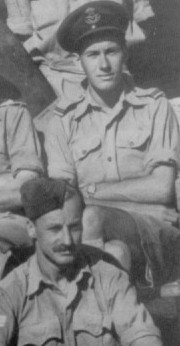
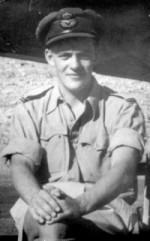
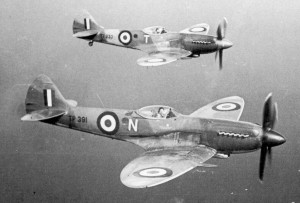
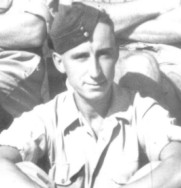
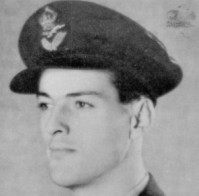
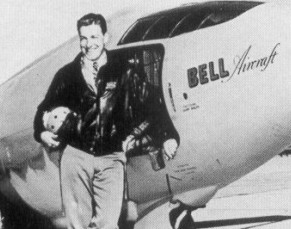
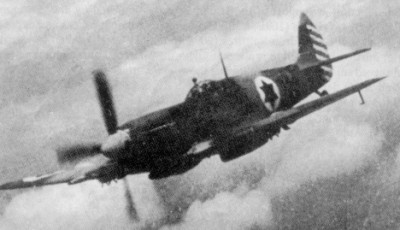
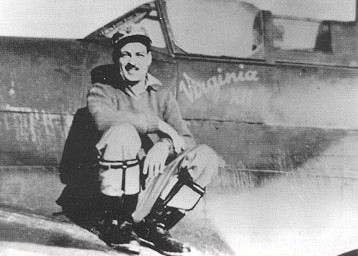
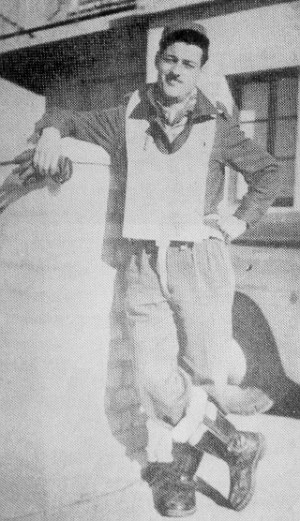
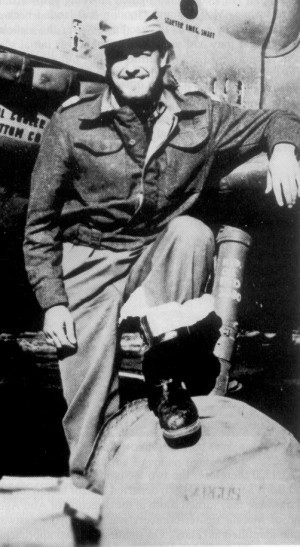
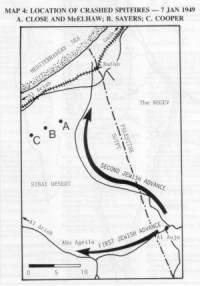
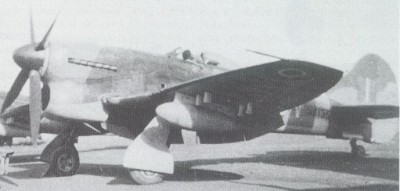
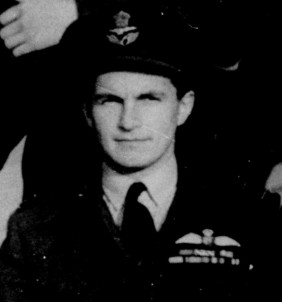
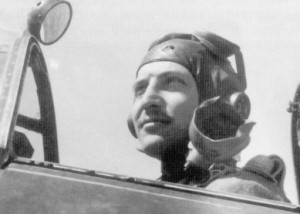
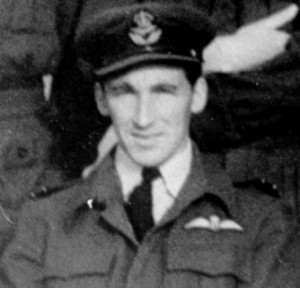
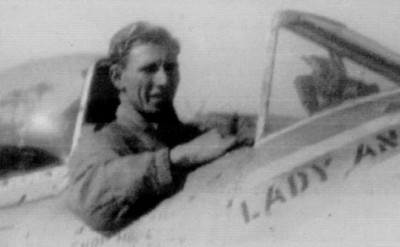
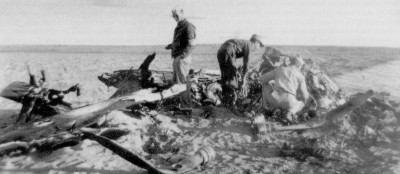
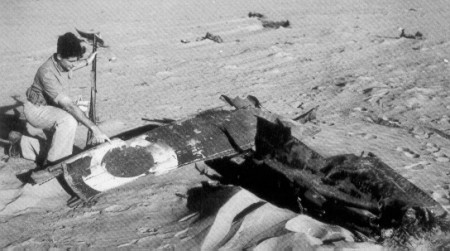
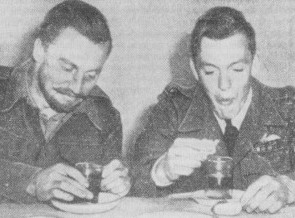

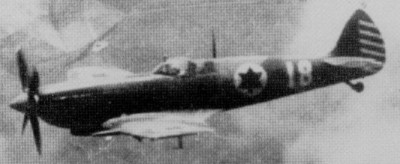
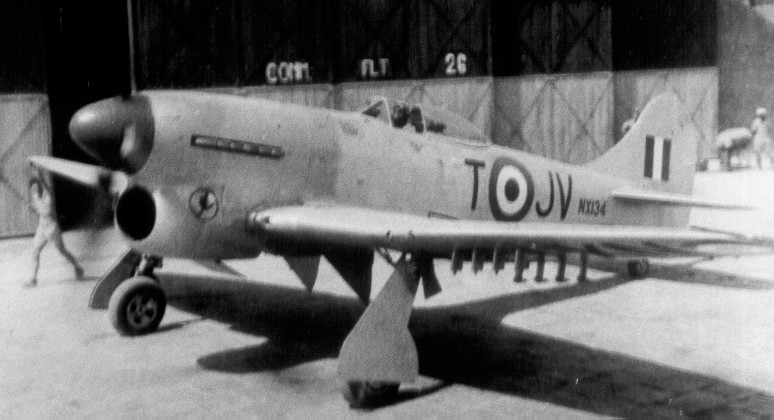
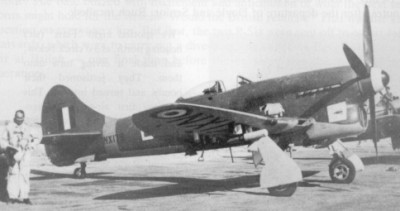
Swedish Cold War Reconnaissance
After WW2 the Swedish Air Force quickly realised the threat posed by the rapidly expanding Russian empire and, despite the countries long-standing neutrality, they began to undertake reconnaissance activity along the Baltic. The early missions began in the autumn of 1945, continuing into 1946, and were flown by a SAAB B18B, a Swedish version of the Junkers Ju-86, operated by the F17 wing at Ronneby. These missions usually took off during the night so they could arrive in the target area at dawn. Once they reached the Baltic coast, the B18B would climb to 200-300 meters to take photos of any vessels they encountered and they frequently encountered Soviet fighter aircraft.
In 1946, following reports about rockets flying through Swedish airspace, it was decided to mount a reconnaissance sortie towards the Penemunde peninsula where it was suspected that Soviet rocket research was based at the old German rocket research facility. A SAAB B17 single engined dive bomber was converted into a recce aircraft and on 7 Aug 46 made its first attempt to photograph the facility, but had to turn back when it was intercepted by a number of Soviet fighters. A number of further attempts were made by the B17, but every time the sortie had to be cancelled when numerous Soviet fighters intercepted the aircraft before it reached the target. Eventually it was realised that a higher performance aircraft would stand a better chance of successfully completing the mission and it was decided to use a Swedish P-51D instead. A number of American reconnaissance cameras were borrowed and installed in the P-51D by Swedish technicians. The sorties, known as Operation Falun, began on 10 Jul 48 and the results were shared with the Americans.
However, before long it was decided that these reconnaissance sorties needed a dedicated reconnaissance aircraft to obtain the best results and for this the Swedish Air Force decided to use the Spitfire PR Mk XIX, known in Sweden as the S31 and in 1948 this was operated by the F11 wing at Nykoping. Between 1948-9 around 15 reconnaissance sorties were flown in an S31 along the Soviet Baltic coast, but avoiding major cities. On 25 Sep 49 an S31, with all national insignias covered by black paint, operating from Lulea in the north of Sweden made a single sortie to the Kola peninsula.
The Swedish Air Force had also soon recognised the need for gathering SIGINT from their neighbours, particularly the Soviet Union and on 13 Jun 46 a converted B3 (Junkers Ju 86) began flying out of Visby on the island of Gotland on a 3-4 hour sortie to gather data on Soviet radars and by Nov 46 this one aircraft had logged over 300 flight hours on this task. In 1951 a twin engined SAAB 18 was also used for some SIGINT roles but that same year the Swedish Air Force took delivery of a DC-3 aircraft (79001) that took over the SIGINT task from the B3 and completed its first sortie on 13 Jun 51. This aircraft made a total of 53 SIGINT flights before Soviet fighters shot it down on 13 Jun 52 just east of Gotland in the Baltic. Soviet fighters also shot down a Swedish PBY Catalina searching for the survivors of the DC-3 just east of Gotland. With the loss of the DC-3, the SIGINT task was undertaken by another DC-3 (79002) until that aircraft was replaced by a Tp82 Vickers Varsity and today DC-3 79002 is preserved in the Skokloster Motor Museum, 45km north of Stockholm.
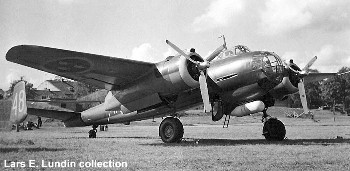
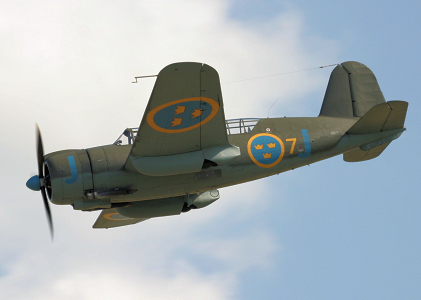
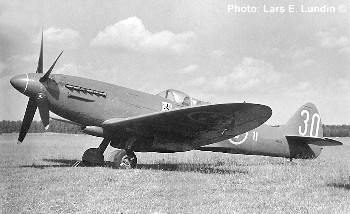
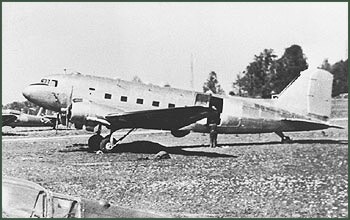
RF-80A - first over Russia
On 10 May 1949, 1st Lt Bryce Poe II slowly eased his RF-80A, fitted with special long-range tip tanks, into the air from Misawa Air Base in Japan. On this first mission Poe overflew the Kuril Islands in the extreme Soviet Far East. Poe then began making flights over the Russian mainland and on 10 Mar 50 actually overflew Vladivostok, which was then a closed city and excluded all foreigners.
To ensure his activities were known by only a few individuals, Poe actually interpreted the developed photographs of his targets himself and personally briefed the Theater Commander, Gen Douglas MacArthur and the Far Eastern Air Forces Commander, Lt Gen George E Stratemeyer.
The start of the Korean War on 25 Jun 50 gave Poe a new target area and he was tasked on many occassions to fly along the Yalu River in his RF-80A and take oblique photographs across the border into China. However, before long Poe was again tasked over Russia and overflew the Kuril Islands, Sakhalin and Vladivostok. On many of these missions Soviet fighter aircraft attempted to intercept his RF-80A, but the obselete piston aircraft that equipped the Soviet Far East Air Force never had sufficient performance to catch the much faster jet aircraft.
The very brave Bryce Poe II continued to make occassional solo reconnaissance flights over Russia, achieving a total of 19 missions over Soviet or Chinese territory, until he was posted back to the USA in Jan 51. Poe's activites obviously did his career no harm and he eventually retired from the USAF as a General.
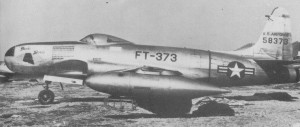
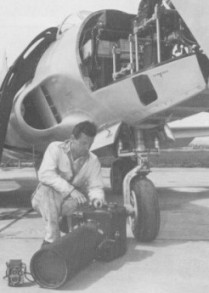
Spitfires Over China
In Jan 1950 Flt Lt Edward 'Ted' Powles, who had trained on and mainly flown twin-engined aircraft, was rather surprised to suddenly be posted to RAF Finningley to complete a ‘refresher course’ on the Supermarine Spitfire PR14. His surprise was compounded by his build, 6ft 4ins and 180lbs, hardly ideal for squeezing into the confined cockpit of a Spitfire. Nevertheless, Powles completed the course and was then posted to RAF Leuchars in Scotland and trained to fly the Spitfire PR19 in high and low altitude reconnaissance sorties.
In Aug 1950, he was posted to RAF Tengah in Singapore, spending 4 months undertaking photo reconnaissance sorties and air strikes in Spitfire FR18s as part of Operation Firedog, the campaign against communist insurgents hiding in the Malayan jungle. In late Nov 50, Edward Powles transferred to 81 (PR) Sqn at RAF Seletar, continuing to fly a number of medium-level reconnaissance sorties over the Malayan jungle. Then just before Christmas 1950, the squadron CO informed Powles he had been selected to take a flight of two PR19s from Seletar to RAF Kai Tak in Hong Kong on 1 Jan 51. Exactly what his duties would be whilst he was operating from Kai Tak was never really explained, either by the CO at the time or at a later briefing by another senior officer from the RAF Headquarters at Changi, but such was the way of things sometimes in those far-off days.
Flight Sergeant Padden was selected to accompany Powles and both men carefully checked and air tested the two Spitfire PR19s assigned for this detachment, PS852 and PS854 fitted with split pairs of F52 cameras with 36in lenses, on New Years Eve - the day before departure. On 1 Jan 51, presumably after fairly muted New Year celebrations, the aircraft departed for Hong Kong and after an overnight stop in Saigon in French Indo-China and another refuelling stop in Tourane, both aircraft arrived safely at RAF Kai Tak in Hong Kong. After a couple of days spent flying around the local area to familiarise himself, Powles still had no orders or terms of reference and was no wiser about the purpose of this detachment - he was simply advised by OC Flying to await instructions. Eventually, after a couple of weeks flying sorties to assist the flights of Vampire jets being ferried into Sek Kong from Tourane, everything became clearer when Ted Powles was asked by a photographic interpreter, who was presumably acting with authorisation from higher authority, if he could take some aerial photographs of a number of Chinese islands in the local area.
On 16 Jan 51 Edward Powles flew PS852 on his first sortie over Chinese territory and by the end of the month he had completed a further 3 sorties. Then in Feb 51 he was requested to take low-level oblique photographs of an airfield on the Chinese mainland and, after borrowing a Spitfire FR18, fitted with an oblique camera, from 28 Sqn he completed the sortie and later retained the aircraft for other low altitude photography. By mid May 51 Powles had flown 16 sorties over China, mainly over costal areas within 100 miles of Hong Kong, when he received his most difficult request to date – could he photograph the dock area and airfield on the island of Hainan, at the extreme range of the PR19. After carefully considering the possibilities, Powles decided that it would be possible with the assistance of a US Navy destroyer and an RAF Sunderland flying boat in the general area, who could provide accurate weather reports and would also give him some possibility of rescue if things went completely wrong. Nevertheless, as this sortie was at the limit of the range of the PR19, it was essential that Powles obtained the most accurate weather forecast to ensure he could take account of the high level winds in his planning. Unfortunately weather forecasting in the South China Sea area at this time was generally unreliable and the only really accurate reports were those obtained from incoming aircraft and ships. On the morning of 21 May the weather reports were good and Powles made the decision to attempt the overflight the following day.
On the morning of 22 May 52 at 1000hrs, Edward Powles took off in Spitfire PR19 PS852 and turned south-west heading out alone over the vast expanse of the South China Sea. As he slowly climbed to his cruising altitude of 30,000ft, Powles could see the weather was good, but after about 26 minutes when he made another course correction, he noticed the clouds building up to the west and 15 minutes later a heavy layer of cloud at about 20,000ft over the northern part of Hainan Island – not a good sign. Then just before he turned northwest towards the island, he called Tourane pretending to be an American and asked for a weather report – the Sunderland and the American destroyer were also listening out for this call which indicated Powles was in the area and about to commence his photo run over the island.
As he was making the radio call, Powles also noticed a layer of cirro-stratus over the coast with a base of 28,000ft and decided to descend to get below the cloud to ensure he could complete the photo run, even though he was under strict instructions not to descend below 30,000ft. Running in towards Hainan Island, Powles levelled out at 27,000ft and, realising that he would need to make three runs, rather than the two originally planned, to cover all the target area, he marked the flight lines on his map and adjusted the interval settings on the Type 35 camera. Identifying the start point for the first run, Powles turned onto track and switched on the cameras, whilst continuously scanning the surrounding sky for approaching Chinese fighters. During the second photo run it became obvious to Powles that there was a large discrepancy between his map and the actual layout of the island and he had to adjust his track accordingly. The final photo run was even more difficult, as Yulin airfield had been considerably enlarged since Powles map was drawn, and then as he neared the end of the run he noticed the sun glint of a couple of aircraft approaching from the north at about 20,000ft on an interception course. Completing the photo run, Powles opened the throttles and climbed into the layer of cloud, turned south out over the sea, later when he emerged from the cloud and levelled off at 36,000ft and noticed no sign of enemy aircraft, he throttled back to the optimum cruise settings to conserve fuel and began the long flight back to Hong Kong.
However, the unplanned third photo run over Hainan Island had eaten deeply into his fuel reserves and after making another radio call to indicate that he was clearing the area, Powles quickly calculated that he would only have about 5 minutes of fuel remaining when he reached Kai Tak. Powles then descended to 22,000ft, the PR 19’s optimum altitude when flying for maximum range, to eke out the remaining fuel. Unfortunately after 30 minutes he entered the cloud he had seen on the outbound leg and, as the aircraft began icing up, had no choice but to descend to 15,000ft to get below the cloud, increasing still further the drain on his fuel. When he finally came within radio range, Powles obtained an accurate steer towards Victoria Peak and the latest met information, a cloud base of 1,800ft. When he estimated he was 100nms from Kai Tak, Powles had empty wing tanks and only 30 gallons of fuel remaining in the main tank - insufficient for a normal approach. Fifteen minutes out from the airfield Powles called Hong Kong approach, explained he was low on fuel and started a descent on track to 7,000ft. Levelling out at 7,000ft, Powles was able to visually identify his position and continued descending to 1,700ft, whilst calling Kai Tak for an emergency landing on Runway 31 with only 5 gallons of fuel remaining. Unfortunately the crosswind was too strong for a landing on that runway and he was directed to use the much shorter Runway 07, on which overshoots were forbidden because of buildings and mountains – not that there was any chance of the aircraft overshooting. With the fuel gauge bouncing on empty, Powles maintained 1,700ft and turned finals over Kowloon Bay lowering the undercarriage, however, just as he was about to lower the flaps his fuel ran out and the engine stopped. Thanks to his superb airmanship, Powles had enough height and speed in hand to carry out a deadstick landing on the grass and bouncing onto the runway – the time was 1330 and he had been airborne for exactly 3½ hours.
On 27 Aug 51, again using PR19 PS852, Edward Powles conducted another long-range overflight of Hainan Island, this time to photograph the harbour, port and airfield at Haikou on the north-eastern tip of the island. Once again, despite thoroughly checking the weather conditions, he encountered strong headwinds and after completing the photo run and turning back towards Hong Kong, found himself 200nms from Kai Tak with only 50 gallons of fuel remaining. However, by carefully planning his return leg he again managed to position himself on finals for runway 13 at Kai Tak just as his engine spluttered and stopped when it ran out of fuel. Another deadstick landing followed and this time he even had the time to turn left and clear the runway before bring the Spitfire to a halt – flight time on this sortie was 3hrs 15mins.
On 6 Nov 51 Edward Powles again flew his favourite aircraft, PR19 PS852, on another long-range overflight, this time over the Paracel Island which lie to the southeast of Hainan Island. This time the weather and wind conditions were good throughout the sortie and after taking off at 0900hrs and climbing to 30,000ft, Powles spent 40mins photographing all the larger islands, before returning to Kai Tak at 1210hrs. Later in 1952 he arranged for a second world war German telephoto lens, with a focal length of 60in, to be fitted into an RAF F52 camera body and mounted in an RAF Sunderland flying boat. On 29 May 52 the Sunderland, VML745, flown by Flt Lt Brand with Edward Powles on board, managed to stagger up to 16,000ft and whilst flying 3 nms off the coast of China, take some oblique photographs of Chinese territory. A further four flights were made using the Sunderland fitted with this unusual camera combination during which many oblique photographs of Chinese territory were obtained, but only with the inner starboard engine stopped and the prop feathered, to prevent the exhaust from blurring the picture and with a consequence, the Sunderland struggling to maintain 16,000ft.
By the end of 1951 Edward Powles had flown 63 PR sorties over Chinese territory. Amazingly he was given a special briefing for only 4 of these sorties and each time he was reminded that he had no authority to carry out the flight and that if anything should happen he was on his own – a quite unbelievable situation!! It is believed that Edward Powles colleague, Flight Sergeant Padden, did not undertake any overflights. However, when FS Padden was recalled to Singapore, he was replaced by Sgt Mutch, who was himself later replaced by Sgt Hood and these two pilots both flew PR sorties over Chinese costal islands. During Sep 52 Sgt Hood was replaced by Sgt Walker and by this time the PR19 detachment at Kai Tak had photographed practically all the important intelligence area along the coast of China, from about 400nm south-west of Hong Kong to 160nm north-east. A number of areas over mainland China, up to 100nm inland, were also photographed mainly from 30,000ft. Whenever aircraft contrails were sighted during sorties over the mainland, Powles climbed away from the aircraft towards the coast and then returned when he was certain the aircraft posed no threat.
Although neither of the Spitfire PR XIX’s used for these sorties, PS852 and PS854 survived, their sister aircraft PS853 does. After serving for many years with the RAF Battle of Britain Memorial Flight, the aircraft is now operated by Rolls Royce from Filton. In Jun 52 Flt Lt Edward Powles was awarded the Air Force Cross in recognition of his work. The latter part of the citation sums up perfectly the ability and character he displayed when flying these sorties over China: “This officer, even when flying at altitude, often over the sea, alone in a single-seater aircraft, has always shown the greatest determination to complete his mission although this entailed returning to base with his fuel almost exhausted; he has repeatedly earned high praise for his skill, courage and high standard of airmanship.”
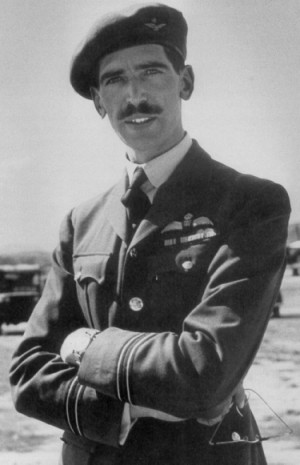
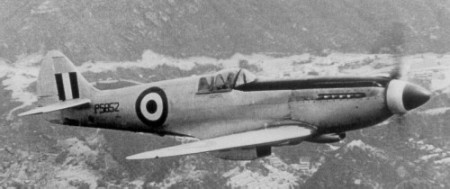
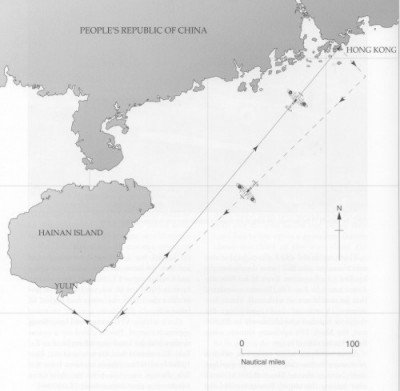
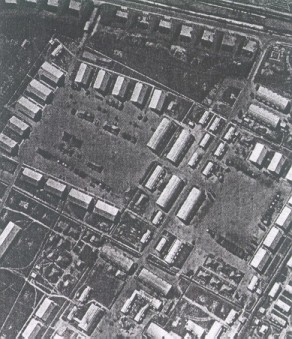
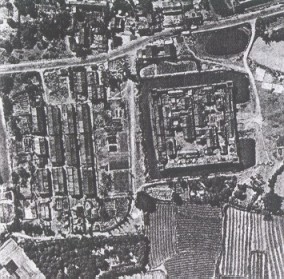
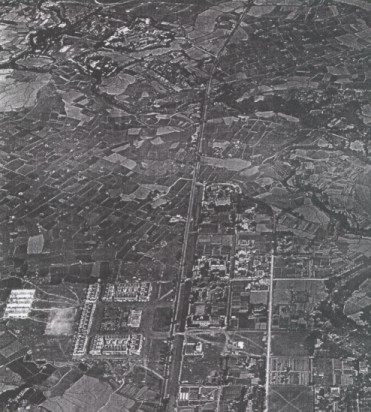
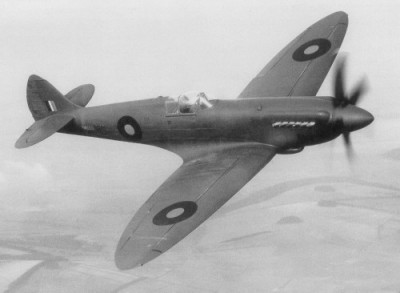
Op Jiu Jitsu
To successfully bomb targets in the Soviet Union, USAF SAC aircraft would have had to fly at high altitude and possibly in bad weather or at night, making it virtually impossible to identify targets visually. Navigation beacons could not go far into the USSR, so in order to correctly identify their targets, the navigators had to be able to recognise them from the radar images they created. Radar portrayed large towns and geographical features quite clearly, but it was difficult to predict how a radar picture of features like factories and missiles sites would actually appear. For guaranteed accuracy it was important that bombardiers should be provided with photographs of the radar images of their targets. The head of SAC, Gen Curtis LeMay, wanted to send SAC reconnaissance aircraft over the Soviet Union to obtain radar photographs, but was prevented by President Truman. Without this crucial target information, air planners could not accurately determine the enemy's vital centers. As early as 1951 the Truman ban on overflights was proving a real problem for Strategic Air Command, whose targets were scattered across the Soviet Union but were mainly concentrated in the most populous and industrial regions in the Western part of Russia.
General LeMay, was able to get some radar reconnaissance photographs of targets in the Eastern islands of the Soviet Union and China under the cover of Korean War operations. However, this ruse was not possible for the far more important targets in the Western half of the Soviet Union. LeMay discussed the problem with his boss, the deputy head of the USAF, General Nathan L. Twining, and the other Joint Chiefs of Staff. They decided to ask the British, who were more gung-ho and anxious to prove their worth in the special relationship, for their assistance. The U.S. Joint Chiefs of Staff proposed to the British Joint Chiefs of Staff a set of special missions over the eastern part of the Soviet Union. The deal was that the U.S. provided the aircraft and the RAF would fly the missions. The USAF would then share radar target plots with the RAF, allowing them to also be used for the British nuclear bomber force.
The aircraft chosen for the operation were the USAF's RB-45Cs which had in-flight refuelling capacity, enabling them to greatly extend their range, and could fly at Mach 0.72 up to 38,000ft. In July 1951 the 91st Strategic Reconnaissance Wing was based at the USAF base at Sculthorpe, near Fakenham in Norfolk and equipped with RB-45C’s. Only 33 RB-45Cs were built and the 91st SRW was the main operating unit with three squadrons. One was on temporary duty in England, another in Yokota in Japan and one at the unit's HQ in the U.S. At that time the RB-45C of the 91st SRW at Sculthorpe was mainly engaged in mapping the Rhine River, all the way from the English Channel to Switzerland using uncontrolled mosaic photography. These missions were generally extended to 10 or 11 hours with in-flight refuelling from a KB-29 tanker. The RB-45C crews were instructed to stay 100 miles away from Eastern Europe, particularly as the RB-45C had proved vulnerable in Korea to the MiG15 in daylight. However, the new secret missions were planned as nightflights because radar reconnaissance, unlike photographic reconnaissance, was not reliant on light. The RB-45C carried a crew of three - pilot, co-pilot and navigator. So nine RAF men and a doctor were posted to the secret unit. They were not all volunteers and most had no idea what they were about to do.
Sqn Ldr Micky Martin of Dambuster fame was initially selected to lead the operation, unfortunately when he failed to pass the necessary medical for high altitude flying, another leader for the Special Duties Flight had to be found. In July 1951 Sqn Ldr John Crampton, a WW2 veteran who had flown Halifax with Bomber Command in 1943-45 and post-war Meteors and Vampires with Fighter Command, was in command of 97 Sqn flying Lincolns. Crampton was summoned by the C-in-C Bomber Command and told to assume command of the Special Duties Flight in conditions of utmost secrecy. The initial group of aircrew also included Flt Sgt’s Joe Acklam and Bob Anstee, who were normally crew members on B-29s operating with the RAF's 115 Squadron, Fl Lt Bill Lindsay and Sgt John Hill, who were on 35 Squadron and Flt Lt Rex Sanders, who was the filling a staff appointment in the Air Ministry. In September 1951 the secret RAF unit was sent to the USA for training, first to Barksdale Air Force Base, Louisiana then onto Langley Air Force Base near Virginia and finally Lockbourne AFB near Colombus, Ohio. Only Crampton and Sanders knew what the real reason for the training. Bob Anstee thought they were assessing the RB-45C for possible RAF use. Early in December the unit returned to Sculthorpe for further training with mixed USAF and RAF crews. A couple of the original team had not been deemed suitable for jet flying and replacements were eventually found. Training missions were flown over the UK and Europe, day and night using live camera and radar. Following a general election, the RAF apparently found the great wartime leader Winston Churchill much more approachable about overflights than his predecessor, Clem Atlee, and Winston soon gave permission for the flights to take place.
On the March 21 1952 the first special mission was flown just by one RB-45C with Crampton, Sanders and their co-pilot, Sgt Joe Acklam. They went up and down the Berlin corridor, fast and at maximum height. It wasn't for radar reconnaissance, but to see how the Soviets responded to a medium jet aircraft flying through particularly sensitive airspace at speed.
Then, on the April 16 1952 Crampton and Sanders were called to RAF Bomber Command headquarters at High Wycombe for a briefing on the actual mission. On a wall map were marked out the three routes. One was from Sculthorpe through Germany to the Baltic states, the second was south of that, through Germany towards Moscow and the third was south of that, going down through the centre of Russia and then arcing down south on the way out taking in some of the industrial complexes in the south of the Ukraine.
Crampton and Sanders went back to Sculthorpe and briefed the other two crews. Up to this point the other RAF crew members did not know the real purpose of the unit. When Flt Sgt Bob Anstee, who had survived over 50 bombing missions over Germany, saw the planned routes he did not fancy chancing his luck another time. "I thought at that time 'Oh my god, what have they let us in for? Why? Why us? Why did we get lumbered with it?' "I was only shown the flight plans and the patchwork of targets we had to do. It's too long ago to remember but they were basically south of Moscow. Most of us knew nothing of what really was happening until that stage." In case they were captured by the Soviets, the crews were given cover stories that they had got lost. They also carried a bag of false navigation plots and maps. "We did carry a complete set of false flight plans and a complete set of false tales that we got ourselves beautifully lost, but how much that could have worn with all the equipment on the aircraft, I don't know. And if that couldn't have been destroyed we wouldn't have stood much of an argument with them at all," said Anstee.
1st Overflight
On the night of 17-18 April 1952 three RB-45C aircraft were wheeled out of the hangars at RAF Sculthorpe. All the USAF markings had been taken off them and they were resplendent with RAF roundels, much to the surprise of most of the station personnel. After take off, 2 aircraft were refuelled in-flight by USAF RC-29s tankers over Denmark, the other was refuelled over Germany. "Once we left Copenhagen on our way in there were quite a few lights and ground features you can see from the air then. Lights on the ground always give you some reference but once you get into Russia itself, Russia is one large black hole with lights, odd lights here and there. Nothing like flying over a densely populated country or flying over any big areas, like France and Germany. So therefore when you do see lights they really stand out and the way we went in there was very little, there were big areas we were supposed to be photographing; most of them were installations out of their radar range, armed installations which are not lit, and once we came up south of Moscow itself you can see all the lights. Moscow’s a big place and lit up so you do get a good reference point from that. When asked what he thought when he saw Moscow out of the window, Bob Anstee replied "I thought I'd be very happy when I didn't see it any longer and was going the other way again." Crampton and Sanders took the most southern route, which was also the longest. "The flight I was involved in was rather a long one, we had to refuel over Germany before we went in, and we flew about a thousand miles into Russia and then arced our way southwards to come back. And on the way out we had to refuel again to get back to base. Our total flying time for that mission was about ten and a half hours, said Crampton. The other crews also returned safely.
A Canberra flew into Sculthorpe from RAF Wyton to take the film to the Central Reconnaissance Establishment. All the aircrew involved were given an Air Force Cross or Air Force Medal for the missions. In "peacetime" these medals were given for missions that in wartime would have probably earnt the Distinguished Flying Cross. The AFC required no citation and during the Cold War they were frequently awarded to crew that flew intelligence missions.
The Soviets had detected the flights and were furious and they may have been the catalyst for a special commission that was set up in Russia to examine the ineffectiveness of the air defence system against Western intrusion flights.
On the May 9, 1952 Crampton and Sanders flew their aircraft back to Lockbourne AFB via Goose Bay. General LeMay wanted to congratulate the British crew at Lockbourne. "We were invited to General LeMay's office and he was very polite to us and very nice to us and congratulated us and then said, 'Where would you like to go? We'll lay an aircraft on for you to wherever you like.' Which was rather nice. In fact we went to Washington for a couple of weeks," said Sanders. "We were flown back to Sculthorpe and then we all dispersed back to our units.
In a letter dated 12th September 1952 from Sir John Slessor to Gen. Vandenberg another similar operation under the code name "Ju Jitsu" was proposed. However once again the Americans did not use their crews for political reasons. In October 1952 Sqn Ldr Crampton was asked to prepare the unit for another mission. The unit did a lot of training, including a lot of night refuelling. There also needed to be some crew changes as Bill Lindsay had been badly injured in a B-29 crash. Two new recruits, Fl Lt. H Currell and Fl Lt. McAlaistair Furze, joined the unit. The exercise carried on for about 5 weeks and then all of a sudden the whole exercise was called off and the crews were dispersed back to their previous units.
Nothing happened then for a year and two months, then once again the crews were ordered to form up at Sculthorpe, where they did about a month's intensive training. This time they were developing the radar side by improving the radar and the camera facilities. The RAF aircrew kept up the appearance of ordinary exchange crews. More crew changes needed to be made and Fl Lt. Bill Blair, an RAF exchange pilot with the 91st, was recruited. Eventually Rex Sanders was called up again to headquarters RAF Bomber Command for a briefing. Once again there were three routes, roughly the same as last time. One north, one for the centre and one for the south. Just a lot longer," said Sanders. They were told that the Y service was going to monitor the operation. They were told that the mission was as important for the Y service test of Soviet Defences as the actual mission. A senior RAF officer said that even if they failed to achieve their primary mission, from the RAF point of view, the Y service element was sufficient to justify the mission. The RAF was very interested in the organisation of the Soviet Air Force. "We also were told that aircraft would be flying from the American side listening in to the Russian reaction," said Sanders. GCHQ's Y service geared up for the missions weeks in advance. The Unit was given a date and was told it couldn't be changed. "Everything was extremely secret, very few people in the Air Force knew about this. Very few people in Bomber Command knew about it. And in my case, I never even told my wife about it," said Sanders
2nd Overflight
During the evening of 28-29 April 1954, the RB-45C aircraft were again rolled out of the hangers at RAF Sculthorpe with RAF roundels but no serial numbers, all American insignia had again been blacked out. The routes were similar but a lot longer than the first mission and Crampton again chose the longest, the southern route that penetrated Soviet airspace by about 1000 miles and covered some 30 targets, mainly Soviet Long Range Air Force bases. "These targets were fairly scattered over the southern part of Russia. We were zigzagging from one target to another, in quite a piece of evasive routing, I suppose, which might have added to our safety. I don't know. It certainly prolonged our time over Russia," said Sanders.
The British crews had little idea of the commotion they had caused in Russia. The whole Soviet Air Defence network was alerted. General Vladimir Abramov was the Commander for the Kiev region. In 1993, he described how he ordered his pilots to try and ram Crampton and Sanders' plane. "Since it was the dead of night and our MiGS had no radar then, we tried to direct pilot Batyshev and the second pilot into a head-on collision," he said. One of the Soviet pilots was Lt. Nikolai Sysoev. He now said: "Ideally, we weren't meant to ram head-on, but to ram the most vulnerable parts of the plane." Despite guidance from Soviet ground control radar, the MiG pilots could not find the intruder in the dark. So the British crews knew nothing of the Soviets' kamikaze tactics. But they had other problems. "On the way back we experienced quite a bit of heavy flak, which was a surprise. We didn't expect anything in that particular part of the world. But it didn't do us any harm. My only reaction was it was going to spoil my radar reconnaissance work and I tried to let it not do so," said Sanders. "As we came out of the Iron Curtain countries across into Germany, we tried to pick up the tanker aircraft, but unfortunately it was unable to give us fuel, and we were getting pretty low. So we had to land at the American air base Furstenfeldenbruck, which caused some consternation. Here was an aircraft coming from the East landing about three in the morning that shouldn't be there. So we were very quickly refuelled and sent on our way back to Sculthorpe," said Sanders. The only public reference ever made was a paragraph in the Daily Telegraph the next morning referring to unidentified aircraft refuelling over Copenhagen.
These flights were a terrific gamble. Although the MoD still refuses to release the all the files, there can be no doubt that Churchill personally approved the flights. That is what the crews were told. What did Rex Sanders think of Churchill's gamble? "I think it was an amazing decision and very much reflects the character of Churchill. It was a great risk. Had we gone down there would have been quite a furore." But was there a risk of the Soviets mistaking the missions for nuclear attacks. "It did cross our minds that they might be thinking that we were doing something more serious than just taking reconnaissance photographs. We had no real way of knowing what they would make of it. It did cross our minds that they might think this was an actual attack by three aircraft," said Sanders. Did Rex Sanders think the flights had caused tensions? "I'm sure they did. But I think, from the Russian Air Force point of view, they probably recognised them for what they were." In 1992 the Russian military writer, Lt. Col Anatoli Dokuhaev, referred to the last flight in an article in the armed forces magazine "Red Star". He said though that it had been thought by the defence units that they were reconnaissance flights, "Specialists of the day could not rule out that there were not nuclear weapons on board." The Russians had identified the aircraft as B-47s and thought they were USAF flights. This was to be the last radar British recce mission. "Why?," I asked, "The Russian defences were improving all the time. They were getting new fighters, improved fighters, and the speed and height of the RB45 was becoming a bit obsolete. I think the risks would have been too great, with that aircraft," said Sanders.
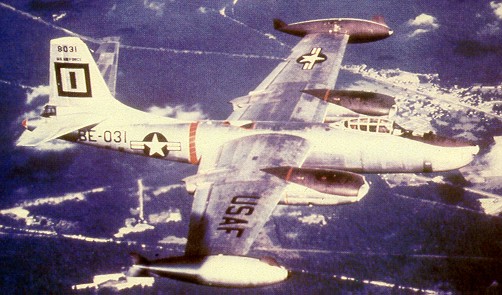
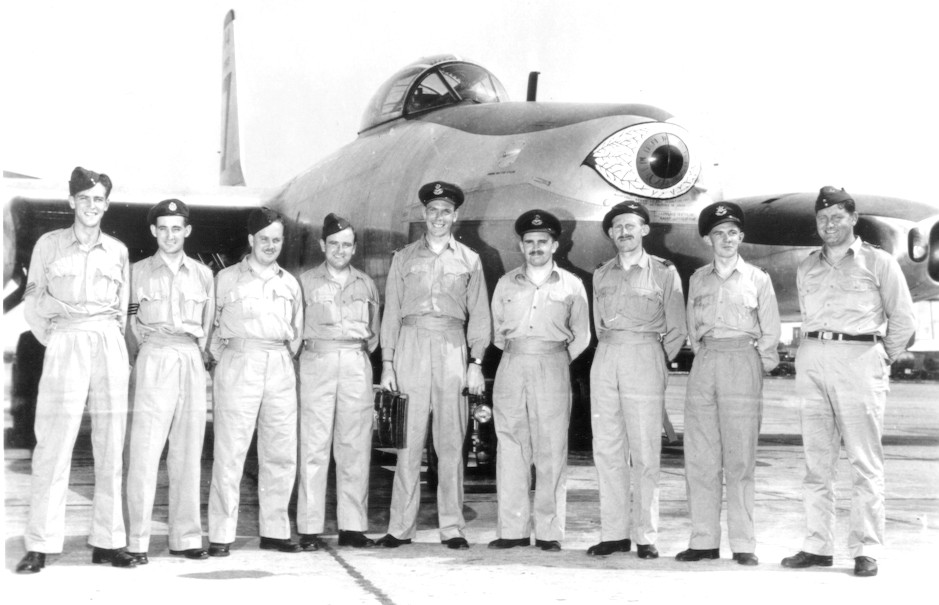
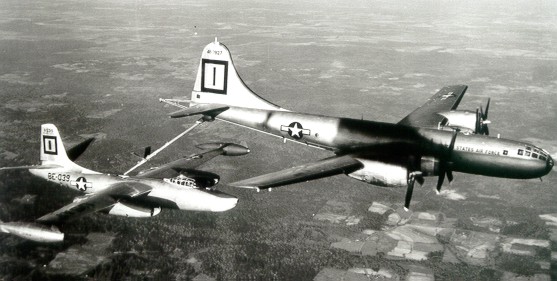
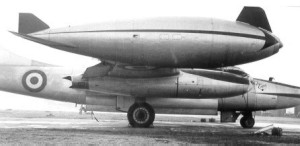
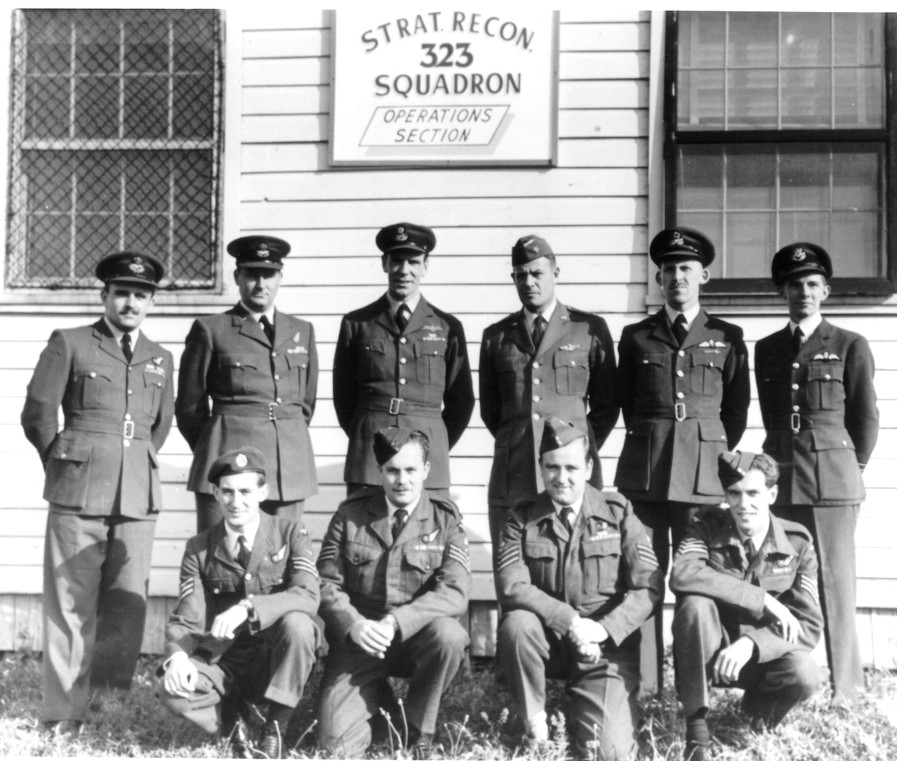
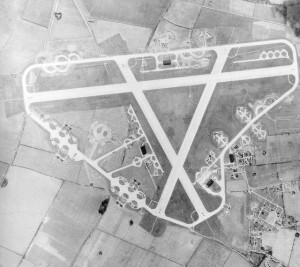
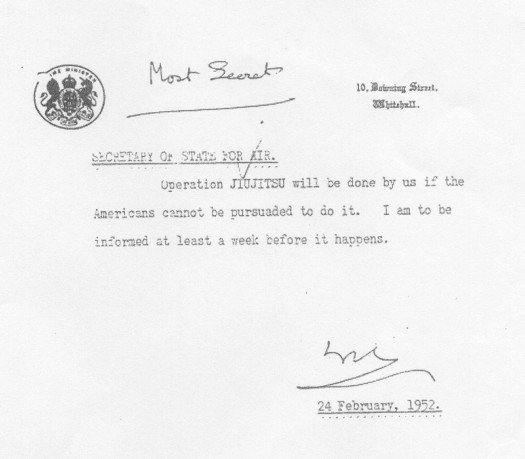
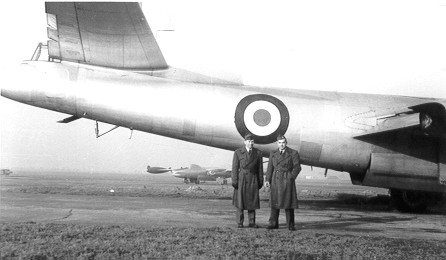
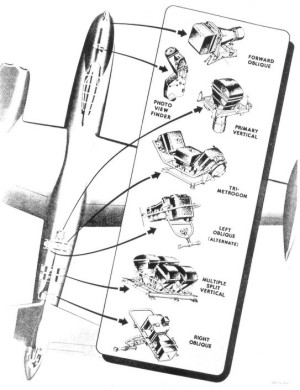
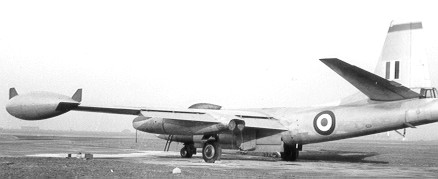
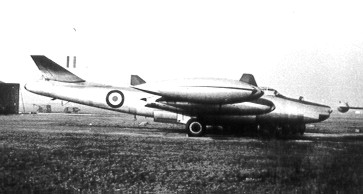
Siberia Overflight
On 15 Oct 52 two specially modified B-47Bs, accompanied by two KC-97 tankers, took off from Eielson AFB in Alaska and turned towards the Russia border. The lead plane was piloted by Col Donald E Hillman, the Deputy Wing Commander from MacDill AFB Florida with Maj Lester E Gunter as co-pilot and Maj Edward A Timmins as Navigator. The back-up plane was flown by Col Patrick D Fleming with Maj Lloyd F Fields as co-pilot and Maj William J Reilly as Navigator. Their mission, which had direct Presidential approval, was to photograph a number of Soviet air bases deep in Siberia to determine what aircraft they were operating. After refuelling from KC-97 tankers of Point Barrow, Alaska, the B-47’s headed towards Siberia. The back-up aircraft flown by Fleming photographed and mapped Wrangel Island, about 100 miles from the Siberian coast, then orbited over the Chukchi Sea to act as a radio relay. The aircraft eventually landed safely back at Eielson.
Meanwhile Hillman and his crew flew past Wrangel Island and, maintaining radio silence, turned southwest towards the Soviet coast. Crossing the Soviet coast to the west of Ambarchik, the B-47B turned south into the heart of Siberia with it’s cameras photographing a variety of targets. After a while the aircraft turned south east and, as fuel burned off, climbed to over 40,000 ft whilst cruising at around 480 kts.
The aircraft’s warning receivers eventually notified them that they were being tracked by Soviet radar and gradually a number of MiGs were sighted climbing towards them on an intercept course but they had left it too late and failed to catch the B-47B. Continuing southeast, the B-47B passed over Egvekinot and Provideniya before turning northeast to exit Soviet territory near the Chukotskiy Peninsula. Hillman returned direct to Eielson and landed after spending nearly 8 hours airborne. He and his crew had made a 3500 mile flight and overflown nearly 1,000 miles of Soviet territory.
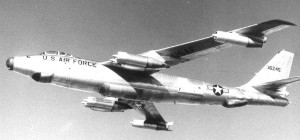
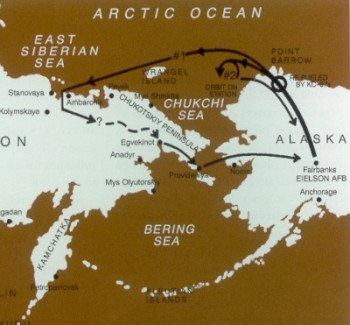
Kapustin Yar
At the end of the Second World War a large number of captured Nazi scientists were transported back to Russia and enticed to work on developing rockets similar to the V2 for the Soviet Union. When these scientists eventually returned to Germany, it was soon realised that they were one of the few sources of up to date intelligence on Soviet scientific activity and they were quickly debriefed by American and British intelligence officials. It was during these debriefs, in early 1953, that Western intelligence began to get reports of a new Soviet missile testing site at Kapustin Yar, a remote site near the Volga River (48.35N, 46.18E), to the North of the Caspian Sea and East of Volgograd, still known then as Stalingrad. The returning German scientists reported that the Kapustin Yar site was one of the most important military missile testing grounds in the USSR. Western intelligence agencies were determined that Kapustin Yar should be photographed to confirm the reports, the problem was how?
At this time, before the U-2 was built, the USAF lacked an aircraft with the necessary performance for such a risky sortie. However, the Canberra had recently entered RAF service and this aircraft alone possessed the performance necessary for this particular mission. The USAF approached the RAF and requested their assistance; with an agreement for the USAF to support the mission in any way required and then share in the results. The idea of the RAF flying such a mission made perfect sense. Firstly, there was a Presidential ban on the USAF from over flying the Soviet Union. Secondly, the Canberra was the only aircraft available with sufficient range, speed and altitude to be able to carry out the mission and was an excellent day photographic platform, as well as being able to fly high enough to evade most of the Soviet air defences. The Prime Minister, Winston Churchill, was informed of the USAF proposal and gave authority for the sortie to proceed.
The generally accepted version of events is as follows: one day sometime in Aug 53, a specially modified Canberra B2 or PR3 took-off from Giebelstadt, in what was then West Germany, and headed East directly towards Kapustin Yar. The entire sortie took place during the day and the Canberra, probably carrying a crew of two a pilot and a navigator, would have climbed to its maximum operating altitude, between 46,000 and 48,000ft, as the fuel burn off. The Canberra was tracked on radar by Warsaw Pact forces all along its route, as it flew over Czechoslovakia, Poland and then the Ukraine. Continued attempts to intercept the Canberra were made, but at this extreme altitude the MiG-15 pilots, who were operating without any onboard radar, failed to intercept the aircraft. The MiG-15 pilots were unable to maintain the same altitude as the Canberra, so they began to attempt to zoom-climb up behind the aircraft and quickly fire off a few shots from their cannons, before they quickly stalled and lost height. Eventually, as the Canberra neared Kapustin Yar, one MiG-15 pilot got lucky and managed to obtain a few hits on the Canberra. Although the Canberra was not seriously damaged, the holes in the airframe caused a slight vibration. Consequently, although the Canberra photographed Kapustin Yar as planned, the photographs were blurred and revealed little detail of the site itself. After completing the photo run, the Canberra turned southeast over the Caspian Sea and eventually landed at an airfield in Iran.
Red Air Force Lieutenant, Mikhail Shulga, recalls trying to intercept a Canberra in his MiG fighter in the Kapustin Yar region, although the exact date is unknown. He was guided during the attempted interception by Soviet ground control and recalled: "I began to climb to 48,000 ft, to 48,500 ft, and they said ‘Look around you. Look to the right and look to the left.’ I looked. They said ‘look higher and look a bit to the right.’ I looked up and there a few thousand feet above me I saw the plane. They asked me: 'Can you see it ?' I said, 'Yes, I can, shimmering beautifully in the sunshine.' They said: 'Prepare your guns.' So I accelerated and climbed up towards the plane - 4,500 feet, 5,000, 5,500 feet higher and my plane was stalling. Nothing came of it. The plane was flying higher than me. They said: 'Do it again.' I tried again. 'Can’t you reach it?' No, I can’t.'" Later, on 5 Aug 1960, the Philadelphia Inquirer carried another account of the incident by a Soviet defector, who in 1953 had served as an air defence radar operator. The defector remembered that ‘During the (Canberra) flight all sorts of unbelievable things happened ......... in one region the operator accidentally sent the Soviet flights West instead of East; in Kharkov, the pilots confused the planes (aloft) and found themselves firing at each other.’ The defector also reported that: The incident resulted in a major purge. Many Generals and Officers were removed from their posts. One General was demoted to the rank of Lieutenant Colonel and committed suicide. Other personnel were sent to punishment battalions.
Assuming the various sources who have detailed the sequence of events described above are telling the truth, it is now 52 years since this incident took place and yet, despite everything else that has been de-classified since the end of the Cold War and the Freedom of Information Act, the precise details of what actually took place remain as elusive as ever. The official UK government position is that the flight did not take place - so perhaps it's time to review the evidence and then you can draw your own conclusions.
The RAF overflight of Kapustin Yar was first mentioned in 1964 by Robert Amory, deputy director of the CIA in the 1950s, in an oral history he completed for Columbia University. His version was that the USAF Chief of Staff Nathan Twining said "it couldn't be done" but the RAF did it instead. A British Canberra took off from Germany and "got some fair pictures" then landed in Iran, but it had been detected by Soviet radar en-route. According to Amory the British said “God, never again, so to speak. The whole of Russia had been alerted to the thing and it damn near created a major international incident. But it never made the papers”. The same story, with some additional details about the Canberra being intercepted and damaged by gunfire, was repeated by Stewart Alsop in 1968 in his book about the CIA entitled 'The Centre'. It is believed that Alsop was supplied with the additional information on the overflight by General Lewis, a key USAF intelligence officer in the mid-1950s.
No more details about the overflight surfaced until the 1980s when a CIA historian, Don Welzenbach, was researching the history of the CIA's airborne reconnaissance program for his book 'Overview'. He interviewed Dr Jim Baker, the famous Harvard astronomer who designed the lenses for most US reconnaissance cameras in the 1940s and 1950s. Don Welzenbach wrote that Baker recalled that visiting Europe in Jan-Feb 54 when a high ranking RAF intelligence officer, possibly Air Marshal Fressanges, told him that the Kapustin Yar overflight had taken place the previous summer, although in a later interview Baker stated that they only discussed high-level oblique photography. In a later paper that Don Welzenbach submitted to a US/UK symposium held in Sep 93, he linked the overflight to Operation Robin and stated that an extended range Canberra PR7 had conducted the mission, despite having previously referred to a "specially modified Canberra Mk II" as being the aircraft used for this sortie. As the PR7 didn't enter RAF service until 1954, this type of aircraft would not have been available in the summer of 1953.
The next reference to the RAF overflight of Kapustin Yar was made by Cargill Hall, the NRO Historian, in his 1997 paper in the US Military History Quarterly "The Truth About Overflights". Hall includes more detail, stating that the flight was part of Project Robin and was conducted by a Canberra B2, stripped of all excess weight and with its bomb bay filled with fuel tanks, carrying a special camera with a 100 inch lens. It departed from Giebelstadt in Aug 53 and flew at between 46-48,000ft via Kiev-Kharkov-Stalingrad en-route to Kapustin Yar and then down the Volga River before landing in Iran. Hall also mentions the aircraft being damaged and the consequent poor quality of the blurred images obtained. Although the RAF overflight of Kapustin Yar has been mentioned in some subsequent publications, they all essentially repeat the same details described by Cargill Hall, without adding any additional new information. The official UK Government position remains unchanged, officially the flight never took place and so far no mention of the over flight has ever been uncovered from The UK National Archives, formally the Public Records Office in Kew.
So we are faced with three possibilities about the overflight of Kapustin Yar:
- The over flight of Kapustin Yar never took place and all the details have been made up.
- The over flight of Kapustin Yar never took place, the details of the over flight have been confused with other RAF over flights, in particular, Op Ju-Jitsu or Op Robin.
- The over flight of Kapustin Yar took place essentially as described by Cargill Hall and others, but for reasons best known to the faceless bureaucrats who make these decisions, the file is still withheld from public view.
If we examine the first possibility, the obvious question is why would various Americans officials, who were in a position to know what took place, decide to make up this incident? If they wished to make up a daring overflight to ‘spice up’ their recollection of Cold War incidents, why would they suggest the sortie was undertaken by an RAF aircraft - surely they would have described the sortie as being undertaken by a US aircraft?
Looking deeper into the second possibility, I can see no obvious reason why anyone would confuse Op Ju-Jitsu with the overflight of Kapustin Yar. The requirement for Op Ju-Jitsu was completely different - to radar map potential targets for SAC and Bomber Command, rather than a photographic reconnaissance sortie to check on activity at a secret rocket test site. Three American RB-45Cs, crewed by RAF personnel, were used rather than a single Canberra. The RB-45Cs departed from Sculthorpe in England and flew three different routes well north of the track taken by the Canberra. Although it is believed that RAF Canberra’s undertook other sorties over southern Russia in the early 1950’s, they are believed to have been mounted from Turkey and Iran, not from Germany. Op Robin, more of which later, was a series of flights in 1954 and 1955 along the East Germany border that used a special camera to take a series of long-range oblique photographs of targets over the border. The Op Robin flights operated out of RAF Wyton, flew at about 40,000ft on a course roughly 40 nms parallel with the borders of West Germany and no overflight of any Warsaw Pact territory took place. The Op Robin sorties were all conducted by a 'specially modified Canberra', WH 726 fitted with an American 240 inch bomb camera, but this aircraft should not necessarily be confused with the 'specially modified Canberra' that undertook the Kapustin Yar overflight, although the same aircraft could have been used for both operations. The differences between the two operations are glaringly obvious and I find it difficult to believe that anyone involved in intelligence activity at the time would confuse either Op Ju-Jitsu or Op Robin with the overflight of Kapustin Ya.
If we assume the overflight of Kapustin Yar by an RAF Canberra took place as described, why did the RAF, rather than the USAF undertake the sortie? Firstly, by 1953 the various US intelligence agencies had reliable information from numerous German scientists that the Soviets were developing rockets at Kapustin Yar and would have been determined to discover exactly what was going on - the USAF had a real paranoia about Soviet aeronautical capabilities at this time. At the time the USAF were forbidden for conducting overflights of Russia and anyway lacked an aircraft with the necessary range and performance to undertake this sortie. Also, after the first successful Op Ju-Jitsu sortie in Apr 1952, the UK Government under Winston Churchill clearly had few reservations about agreeing to undertake this kind of operation using a specially modified Canberra. Churchill was very keen that Britain play an active part in an alliance with the USA and agreeing to an operation like the Kapustin Yar overflight is exactly the kind of daring operation that would have appealed to him.
In 1996-7 the UK government released two files that help shed some light on RAF reconnaissance activities in the early 1950s. The two files were the Secretary of State for Air's files on 'Project Robin' (AIR 19/1106) and 'Operation Ju-Jitsu' (AIR 19/1126). Rather surprisingly, the first three papers from the Project Robin file (two from Dec 54 and one from Mar 55) are still withheld. These 50 year old papers presumably contain some sensitive information, although quite why this information, that is almost certainly related to information that has been in the public domain for so many years, can still be considered sensitive is a mystery. The documents might contain details of the Kapustin Yar overflight, or refer to the other Canberra overflights of southern Russia, or some detail of Op Robin - until someone actually realises that this information is unlikely to surprise anyone, least of all the Russians, and actually releases these three papers, we simply just don't know what they contain. However, currently other than an obscure reference to ‘a recent flight in the Eastern Mediterranean’ in a memo to the Secretary of State for Defence dated 22 Jun 55, there is nothing in the Op Robin file to suggest that this operation had any connection with the overflight of Kapustin Yar.
The next question that needs to be addressed is which squadron and what aircraft was used for the RAF overflight of Kapustin Yar? The most obvious squadron for undertaking the sortie was 540 Sqn based at RAF Wyton. They were a dedicated Canberra reconnaissance squadron who had been employed for specialist reconnaissance tasks - their later involvement in the Top Secret Op Robin confirms their suitability for an unusual reconnaissance sortie. By May 1953 the Canberra PR3 was just coming into service, and 540 Sqn were soon equipped with eight aircraft. The remaining aircraft on the squadron strength consisted of three Canberra B2s on loan from Bomber Command from Jun-Jul 53 (WH726, WJ573 and WJ574). Originally built as bombers, these three Canberra's were 'specially modified' for reconnaissance duties with 540 Sqn. These modifications would certainly have included the installation of a number of cameras in the bomb bay and possibly even the rear fuselage. In addition, although with tip-tanks the Canberra B2 had a range of 3,000 miles, this may well have been extended by adding an additional fuel tank in the bomb bay, making any of these three aircraft suitable for a very long-range sortie over Russia.
The Operational Record Book for 540 Sqn records that on 27th and 28th August 1953 two aircraft (Canberra B2s WH726 and WJ574) flew 'long range sorties as briefed' as part of an 'operational exercise'. However, although these two flights have previously been identified as possibly being the Kapustin Yar overflight, further research by Chris Pocock has made this possibility very unlikely. According to the ORB these aircraft took-off at 0800hrs from RAF Wyton and returned to Wyton at 1030hrs. Rather unusually, three crew, rather than the usual two, were carried in each aircraft. WH726 carried a Wg Cdr AWH (Freddie) Ball from the Wing HQ, together with Sqn Ldr WN (Don) Kenyon (OC 540 Sqn) and Sgt AJ (Jim) Brown. WJ574 carried Flt Lt Garside, Flt Lt Shield and FS Wigglesworth. On 28 Aug 53 the same two aircraft flew a similarly described mission from Wyton between 1010hrs and 1220hrs with the same crews, expect that Flt Lt Reeve substituted for Flt Lt Shield. Note that both sorties look place in daylight, during the morning when visibility was good, but well after sunrise in the East and why were the older B2s used for these sorties, rather than the newer PR3s?
What was considered sufficiently important about this 'operational exercise' that it was necessary to have three, rather than usual two crew on board, including a wg cdr from Wing HQ? We know from the file that Op Robin had received political approval in Jun 53, so I believe that these sorties were the first attempt to fly accurately at high level down the West German / East German border, remaining at least 10 miles inside the West German border whilst obtaining long-range oblique photographs of targets inside East Germany. This sortie probably provided clear evidence that the current RAF cameras on the Canberra B2 provided insufficient detail for this kind of operation and probably led to a request to the US for the loan of one of their latest long-range oblique cameras for installation in one of the Canberra B2s. The use of two aircraft for these two sorties is significant - the later Op Robin sorties in 1954 and 1955 always involved two aircraft, with the second aircraft checking that the first aircraft was not leaving a contrail. The additional crewman on board each Canberra could have helped cross-check the accuracy of the navigation to ensure the aircraft remained within West German airspace, or operated the camera. Unless the official records are incorrect there is no reason to assume that either sortie had anything to do with an overflight of Kapustin Yar.
It is clear from the records that all three Canberra B2s were later transferred from 540 Sqn to other Canberra squadrons, including 58 Sqn which was also stationed at RAF Wyton. Subsequently, on 1 Mar 54, Flt Lt DC Downs and Flt Lt J Gingell flew Canberra B2 WH726 to Hanscom Field in the USA where the aircraft was fitted with the 240 inch LOROP bomb camera for Op Robin. Consequently, if the Kapustin Yar overflight did take place as reported in Aug 1953, the crew would not have had access to the Canberra equipped for Op Robin as the aircraft was not fitted with the special camera until six months later. Furthermore, conventional downward looking framing cameras were much preferred by photographic interpreters of this period for the kind of imagery that was required of Kapustin Yar, so they would not have specified the use of a special LOROP camera. Finally, having flown all the way over Eastern Europe, with all the risks that entailed, there would be little point in standing-off' from Kapustin Yar to use a LOROP camera, there were no SAMs around in those days and little threat from AAA at 48,000ft, so it would make far more sense to plan a direct overflight.
All this evidence points to the RAF over flight of Kapustin Yar being a completely separate operation from Op Robin. I believe the available evidence suggests that 540 Sqn undertook this operation using one of their specially modified Canberra B2s. Such a Top Secret and politically sensitive sortie would not have been recorded in the squadron or station records at the time, as these records were only classified to Secret.
So what can we pierce together about the Kapustin Yar sortie? If it took place in the summer of 1953, as most people now believe, it could have involved a Canberra PR3, but most probably was one of the modified Canberra B2s and either way it would almost certainly have been flown by a crew from 540 Sqn. The sortie was almost certainly mounted from Giebelstadt, an American base about 8 miles southeast of Würzburg in West Germany. The aircraft’s departure would have been timed to allow it to arrive overhead Kapustin Yar (48.35N 46.18E) during daylight, lets say midday. Assuming a departure from Giebelstadt (49.38N 009.58E), a direct track to the target would have been about 1603 miles - given a cruising speed of 420 kts, this leg would have taken around 4 hrs, therefore, the aircraft probably took off between 0700 and 0800hrs GMT. If the aircraft eventually landed at Tabriz this was about another 772 miles, assuming a direct track this equates to a flight time of about 1hr 45 mins, so the aircraft probably landed between 1400-1500hrs GMT having flown about 2400 -2500 miles. Up until the 1957 coup d’etat, the RAF made regular visits to various Iranian airfields. The Canberra certainly landed in Iran and Tabriz was the airfield closest to the Russian border, but either Khatami near Isfahan, or Zehedan near Tehran were all within range.
Because of the range of the target from Gieblestadt, there would have been little option of flying anything other than directly towards Kapustin Yar, which is situated some 60 miles east of Volgograd (formally Stalingrad), in an area to the north of the Caspian Sea. But this poses an interesting question: why mount the sortie out of Giebelstadt, West Germany, at extreme range where the only option available was a direct track to the target over an area known to be covered with radar sites and fighter stations? If it was possible to land the aircraft in Iran, then why not mount the sortie from there or from the RAF Habbaniya in Iraq? Both these options would have been nearer to the target and would have allowed the aircraft to enter Russia through a much less heavily defended area. Another option would have been Incirlik in Turkey, which was later used in 1956 as a base for U-2 operations over Russia. Perhaps the UK wanted the flight to depart from a US base in West Germany, knowing it would be tracked by radar, to give the impression that the aircraft was American, rather than British. Certainly, there must have been some overriding reason why the sortie was flown from Giebelstadt, but exactly what that was remains yet another mystery.
It is widely believed that the RAF did undertake the daring mission over Kapustin Yar in 1953, but unfortunately which aircraft and crew flew the sortie still remains a complete mystery. There are various possibilities. The range of a Canberra B2 with tip tanks was 3000 miles, with a ceiling of 48,000ft, so this type of Canberra would certainly have been capable of the sortie. However, it is not known whether the ‘special modifications’ which were carried out to the Canberra B2’s that served on 540 Sqn included the installation of an additional fuel tank in the bomb bay, nevertheless, this is a distinct possibility. In comparison, the range of a Canberra PR3 was 3585 miles, with a ceiling of 50,000ft, so the sortie could have been carried out using a Canberra PR3, fitted with a standard F52 camera, the PR3 certainly had greater range and altitude than the B2 without tip tanks and an additional fuel tank. So did Canberra of 540 Sqn fly the daring Kapustin Yar sortie? Unfortunately many of the members of 540 and 58 Squadron are now dead and their individual stories are lost forever. Several officers who served on 540 Squadron, including Gordon Cremer, Don Greenslade and Harry Currell who served of 540 Sqn were also involved in the RB-45C sorties from Sculthorpe. Given the details that have now emerged about Op Ju-Jitsu, hopefully more details may eventually emerge about reconnaissance flights over Russia by Canberra’s during the early 1950’s – time will tell.
Canberra WH726 was struck off RAF charge on 21 Sep 66. It was initially sold to BAC on 1 Feb 66 and then after conversion to B72 standard, was then sold to Peru, given the Fuerza Aerea del Peru (FAP) registration 236 and joined the FAP Frupo de Bombardeo 21 at Limatombo. Unusually, no photographs of this aircraft in RAF service seem to be available, however, a photograph does exist of the aircraft in service with the FAP and the aircraft’s eventual fate is unknown, but it is believed to have been scrapped. Canberra WJ573 was transferred from 540 Sqn to 1323 Flt and then was stored at the RAF Technical College at RAF Henlow from 20 Oct 1960 as part of the RAF Museum collection until it was scrapped at Henlow in 1975. Canberra WJ574 was sold back to BAC in Dec 69 and after conversion to TT18 standard, the aircraft served on FRADU until Jul 91. The aircraft is now in private hands and is still flying today in the USA. I believe that it was one of these three Canberra B2 aircraft that carried out the Kapustin Yar overflight – but which one is anyone’s guess.
A number of years ago I visited an aviation museum and had a long conversation with a retired senior RAF officer who spent his entire career in interpreting reconnaissance information. During our conversation he described how, once all the useful data had been 'extracted' and all the appropriate organisations had been given the opportunity to make their own interpretation of a sortie or programme, the Top Secret file containing all the relevant correspondence and photographs would then be archived in a very high security storage facility, in case the data was required at some future date. However, high security storage facilities have a limited capacity, so there was always pressure on whoever was the custodian of the facility and had responsibility for the files, to see if any could be removed to create space for new files. Bear in mind that some facilities stored literally thousands of top secret files, the less files you were held responsible for, the easier it was keeping track and accounting for these highly sensitive files and, as the loss of a single file was a court martial offence, there was always pressure to permanently dispose of files if at all possible. Although I imagine some file custodians did give consideration on the need to ensure that future researchers could have the opportunity of establishing what really went on by having access to the unwanted files, I imagine this was well down their list of priorities. Indeed I was told that the process of de-classifying a file with a view to it eventually finding its way to the National Archives, was extremely long winded and complex, requiring all kinds of signatures and approvals, often from the USA or other countries; often one or two organisations would block the declassification for no really obvious reason and once this had happened, it was unlikely that approval would be sought in the future, regardless of whether the ‘data’ became even less sensitive with the passage of time - people were simply too busy to try and go through the whole time consuming process for a second time. Therefore, given the complexity and additional work involved in attempting to de-classify a sensitive file, compared to the ease with which these files could be destroyed, it is perhaps unsurprising that there are so many ‘holes’ in the MOD files from the 1950s onwards.
Once the decision to destroy a particular file was approved it was put to one side and when sufficient files were available they used to be taken under armed escort to the old Battersea Power Station and burned in one of their incinerators – I imagine a more modern incineration facility is currently in use. Consequently, as not a single hint whatsoever has emerged from the MOD files after over 50 years of the Kapustin Yar operation, I suspect that every mention of it has literally gone up in smoke and unless some currently hidden diary or written record by one of the individuals involved suddenly emerges, we will unfortunately most likely never be able to get to the bottom of what actually happened.
Despite the overflight taking place nearly 50 years ago, being openly acknowledged by the Russians and alluded to in a wide variety of publications, nothing has ever been officially admitted by the British Government about this famous incident. Furthermore, unlike the RAF RB-45C overflights from Sculthorpe, no individual has ever admitted taking part and the actual aircraft involved has never been positively identified. In the interests of Cold War military and aviation history, it is widely hoped that something eventually emerges on the Kapustin Yar overflight at The UK National Archives in Kew, although for the reasons outlined above, I suspect this will never actually happen. Only when the whole truth finally emerges, can the skill and bravery of the men who actually flew this sortie be publicly acknowledged; hopefully this will happen whilst they are still alive and allow them to receive the long-overdue public plaudits that they so richly deserve.
Updated 15 Feb 09
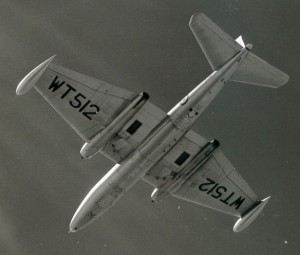
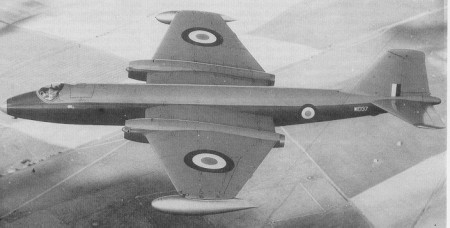
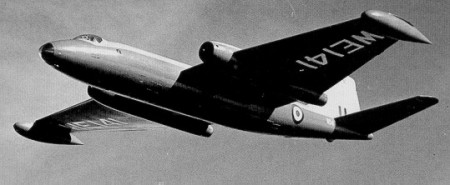
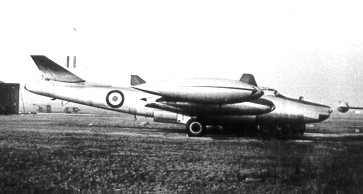
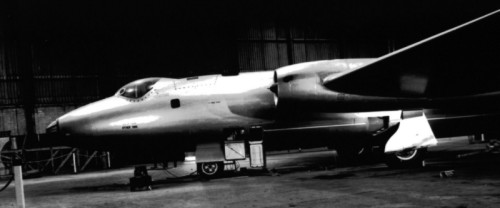
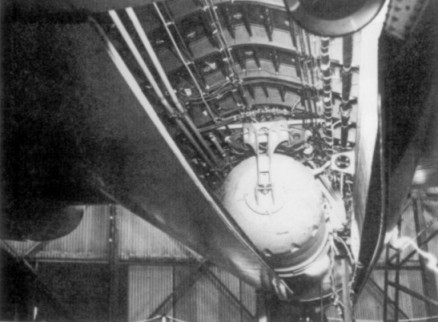
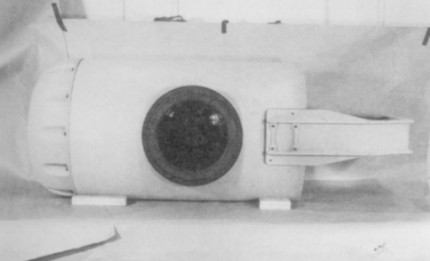

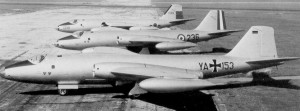

Project Robin
The codename ‘Project Robin’ has often been identified with the photographic sortie conducted by a single RAF Canberra over Kapustin Yar, probably in the summer of 1953. However, recently de-classified files indicate that Kapustin Yar was probably a totally separate operation, although it is highly likely that Canberra B2, WH726, which was definitely involved in Project Robin, was also used either for the sortie over Kapustin Yar or in support. In his article on overflights R Cargill Hall has stated that the Kapustin Yar sortie was flown in late August 1953 from Giebelstadt in West Germany. Records from 540 Sqn, who most likely conducted the sortie, note that on 27th & 28th Aug 53 ‘long range operational sorties’ were flown by Wg Cdr Freddie Ball and Sqn Ldr Don Kenyon in WH726 and Flt Lt Gartside and FS Wigglesworth in WJ574. A second aircraft usually followed an aircraft engaged on an operational sortie for the initial part of the flight, both as an airborne spare and to check that the lead aircraft was not leaving a giveaway contrail. From the details that have gradually begun to emerge from a variety of sources, this record appears to coincide with what can be established on the Kapustin Yar sortie, but until the official records are released, it is impossible to confirm if this was the actual sortie.
The Canberra sortie over Kapustin Yar highlighted the well known danger of a reconnaissance aircraft having to overfly a highly sensitive, and therefore very well defended target, to obtain photographs. However, although side-facing cameras had been installed in various aircraft over the years, their optics were generally fairly restricted and this prevented the camera from having any really effective ‘range’ from the aircraft. In the United States the brilliant camera designer, Jim Baker, had developed a reconnaissance camera with a 100-inch lens. What was needed was a suitable aircraft which could carry the camera to the highest possible service ceiling, allowing it photograph targets at maximum range. At the time there was nothing in the USAF inventory that was suitable, but the RAF’s Canberra fitted the bill exactly.
In June 1953, following an approach from the USAF, the Secretary of State for Defence and the Chief of the Air Staff, agreed in principle, subject to certain conditions, that the 100 inch American camera could be fitted to a Canberra, the aircraft chosen was a B2, Serial No: WH726. It was agreed that the USAF would be given copies of any ‘interesting’ photographs the Canberra obtained. Later in Jan-Feb 1954 Jim Baker visited the RAF’s Director of Intelligence, AVM Fressanges to discuss various issues, including the specially equipped Canberra. During the visit, Fressanges discussed the Kapustin Yar sortie, another clear indication of summer 1953 being the correct timescale for the sortie. Of course there is a possibility that the camera could have been hurriedly installed in time for WH726 to use it on the Kapustin Yar overflight later that summer. But, given the timescale involved, there would have been little time for the aircraft to be suitably modified and the equipment tested but it is a possibility. Also, would the Americans have been prepared to risk the loss of this unique and highly expensive camera on such a dangerous sortie, possibly allowing it to fall into the hands of the Soviets, so soon after it came into service?
The actual F22 camera fitted to WH726 was known as a ‘Bomb Camera’ and used very advanced folding optics, allowing the entire unit to be enclosed in a compact housing resembling a large oil drum which was designed to be mounted in the bomb bay of an aircraft - hence the name. Photographs show the ‘Bomb Camera’ was mounted in the front part of the bomb bay of WH726, looking out of a window cut-out through the side of the port bomb bay door, almost in line with the port undercarriage.
After being fitted with the F22 ‘Bomb Camera’ the specially equipped Canberra, WH726, was ready to start operations. The Canberra was flown at 40,000 feet over West Germany, from Lubeck in the north to the junction of the borders of Czechoslovakia in the south, on a course roughly 40nm parallel with the East German border. Given that the camera looked-out of the port side of the bomb bay, the sorties would have to have been flown from North to South. The camera had an impressive range of around 60nm on flight trials a clear photograph of St Pauls cathedral in central London was obtained whilst the aircraft was over the Channel near Dover.
The Project Robin sorties that can be confirmed took place on the following dates:
- 23 Apr 1954
- 8 May 1954
- 11 May 1954
- 26 Aug 1954
- 27 Aug 1954
- 3 Jun 1955
- 18 Jun 1955
- 19 Jun 1955
- 23 Jul 1955
These nine sorties were flown along the borders of Soviet controlled Germany. The flights covered several different areas and included sorties that were abandoned owing to poor weather conditions. Further flights were planned to cover the borders of Czechoslovakia and the then Soviet Zone of Austria. The photographs obtained certainly justified the further use of the aircraft, but whether other sorties were then subsequently conducted is not known. When the first U-2 sortie over Eastern Europe took place on the 20th June 56 the value of the photographs that the Canberra could obtain were immediately superseded and Operation Robin was quickly scaled down. The camera was subsequently removed from the Canberra and the aircraft returned to more ‘normal’ duties with 540 Sqn. WH726 was subsequently sold back to BAC, converted into a Mk B72 and sold to Peru where it was registered as ‘236’. The eventual fate of WH726 is unknown – a great shame considering the aircraft’s unique history.
What other Canberra’s supported WH726 as it engaged in Operation Robin and where are they now?
B2 Serial No: WH800 was converted by BAC into a PR57, sold to the Indian Air Force and given the registration P1098.
B2 Serial No: WH712 was converted by BAC into a B(1)2 for Venezuela and registered as ‘1425’
The PR3’s that are known to have served with 540 Sqn are: WE136, WE319, WE140, WE141, WE142, WE143, WE144, WE145, WE148, WE149, WE167, WE168 and WE170
Note:
A number of publications state that a Canberra B2 Serial No: WH574 was used to support the 540 Sqn ‘long range operational sorties’ on 27th and 28th Aug 1953. In the authoritative work on the Canberra ‘English Electric Canberra’ by Ken Delve, Peter Green & John Clemons, published by Midland Counties Publications in 1992, all the Canberra’s produced are listed. There is no record of a Canberra B2 with an RAF Serial No of WH574. However, a Canberra B2, Serial No WJ574, was accepted into service by 540 Sqn on 4 Jun 53. This aircraft was later sold to BAC in Jun 1969, converted to TT18 standard and sold to the RN for duties with FRADU. The aircraft still survives to this day in the USA where it is a regular on the airshow circuit in its old FRADU colours.
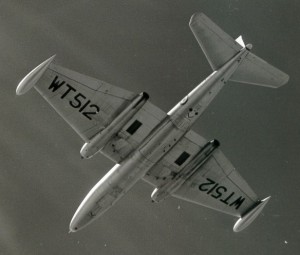
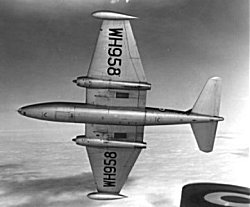
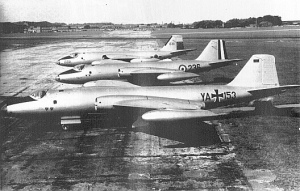

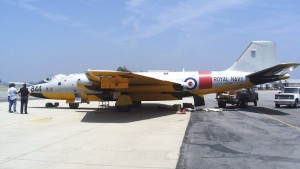
Radio Proving Flights
Throughout the cold war RAF and other NATO countries routinely conducted flights along the borders of Warsaw Pact countries to gather electronic intelligence (COMINT or ELINT) – these activities were described as ‘Radio Proving Flights’. The purpose of these flight was to allow the intelligence community to build up a picture of the Soviet Air Defences, upon which RAF Bomber Command could then base their operational plans. The RAF flights were initially undertaken by No 192 Sqn from RAF Watton using five specially equipped Lincoln B2 aircraft – these aircraft were later supplemented by four Washington RB-29’s. In August 1958 No 192 Sqn was re-numbered 51 Sqn. The flights all took place over friendly or neutral territory or over international waters – no penetration of Warsaw Pact airspace was involved. The main area of operations for the RAF during the 1950’s and 1960’s were the Barents Sea, the Baltic, the Black Sea and the Soviet/Iranian border. The Prime Minister was sent a copy of the proposed monthly programme of flights for his approval. Once Prime Ministerial approval was obtained for the overall monthly programme, Ministry of Defence and Foreign Office officials then carefully planned each individual flight and final authorisation rested with the Secretary of State for Defence.
The principle rules governing RAF ‘radio proving flights’ were:
- Aircraft approached no closer than 30nm to Soviet or Satellite territory. (The Americans rules allowed aircraft to operate up to 20nm from the border, although in the Arctic this was extended to 40nm).
- Except in the case of West Germany, aircraft were not permitted to overfly the territory or territorial waters of friendly or neutral countries whilst engaged in these operations without the concurrence of the competent authorities in the countries concerned.
- No more than 4 aircraft were used together in the same operating area.
- Daylight operations were limited to single aircraft.
- Single aircraft operating by day or night were not permitted to make a direct ‘provocative’ approach to the coast or border and had to fly broadly parallel to the coast line.
- Operations involving more than one aircraft had to be normally flown in conditions of total darkness and in any case under conditions of the light than ‘half moon’.
The American intelligence community also ran their own electronic intelligence gathering operations using, during the same period, the RB-47. The American government submitted a monthly list in advance to the British government detailing when an RB-57 intelligence gathering flight was planned to operate from a British base, such as Brize Norton. A copy of the RAF monthly programme was also forwarded to the American government. Radio Proving Flight Co-ordination Meetings also took place on a regular basis between British and American officials.
RAF flights were usually conducted with two aircraft, a Comet R Mk 2 and a specially equipped Canberra also from 51 Sqn. Typically, the Canberra would fly a profile that would attract the attention of the Warsaw Pact radar defences, allowing the Comet to record the transmissions. This would usually involve the Canberra flying at low-level below radar cover towards the target area and then, as the aircraft neared the miniumum distance they could approach the Warsaw Pact boundary, it would suddenly climb rapidly into radar cover alerting the air defence radars. Meanwhile the Comet would sit back at higher altitude, flying parallel to the boundary, listening in and recording the frequencies and transmissions of the radar and radios used by the air defence forces. Direction finding equipment on-board the Comet would also enable the location of the radar and transmitters to be determined.
However, flights were conducted throughout in strict radio silence, to maintain an element of tactical freedom and surprise whilst concealing the identity of the aircraft from the Russian defences. Radio silence was only broken in an emergency or to recall the aircraft. As far as it can be ascertained, no RAF aircraft conducting a ‘radio proving flight’ was ever lost, although a number of American aircraft were shot down whilst engaged in these activities.
The last Comet R Mk2 of 51 Sqn was retired in 1975. Three Nimrod R1 aircraft gradually took over the electronic intelligence gathering role from the mid-1970’s operating from RAF Wyton. Today 51 Sqn is still operating with three re-equipped Nimrod R1 aircraft from RAF Waddington.
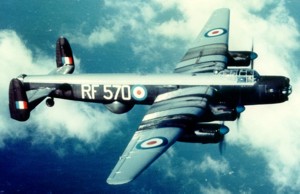

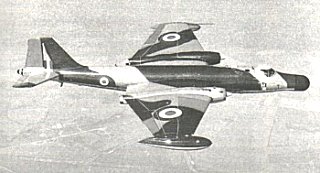
Sabres over Vladivostok
The end of the Korean War on 27 Jul 53 allowed the US Air Force to reconsider where its reconaissance activities in the Far East should be directed. The Pentagon decided to utilise the RF-86F Sabres based in Japan to conduct photographic sorties around the Soviet naval base of Vladivostok. As well as naval facilities, the area around Vladivostok contained a number of bomber bases equipped with the Tupolev Tu-4 Bull, a Soviet copy of the B-29 Superfortress. One of the great fears of Pentagon planners at this time was of a suprise attack by Soviet bombers from the Far East and Siberia flying over the Arctic. Consequently, it was vitally important to ascertain the number of bombers based in this area.
Maj George H 'Jake' Saylor had recently taken command of the 15th Tactical Reconnaissance Squadron (TRS) based at Komaki in Japan when he learned of the plans. Because of the relatively short range of the RF-86F, the plan was for a 2 or 4 ship flight of aircraft to take off from Osan in Korea carrying four underwing fuel tanks which would be jettisoned after the fuel was consumed. It was felt that the main threat would probably come from Soviet fighter aircraft, so it was decided to abandon the sortie if the Sabres started to leave a contrail. The 40-inch vertical cameras carried on the Sabres would enable them to photograph a 7 mile wide strip of land many hundreds of miles long.
On 22 Mar 54 Maj Saylor led two RF-86Fs into Soviet territory adjacent to Vladivostok, but for a variety of reasons the mission was not a complete success. The cover story they planned to use if they were forced down inside Russia was that they had got lost lost engaged in a study of the winds at high altitude. On 3 Apr 54 Maj Saylor led the second mission of four aircraft to Vladivostok and this time it was planned to cover all the targets in the area. After taking off with a maximum fuel load, the Sabres eventually punched-off the empty tanks over the Pacific before entering Soviet airspace at around 45,000ft. No MiGs were sighted by the pilots, although intelligence reports later indicated that they had been detected and MiGs were climbing up to attempt an intercept. It is believed that the RF-86F Sabres of the 15th TRS eventually flew several dozen reconnaissance missions over Russia and some ventured over China, although the exact number of missions flown cannot be accurately determined.
It is known that the last overflight by Sabres occurred in 1957. The US Air Force eventually decided to use the Republic RF-84F Thunderflash as its standard tactical reconnaissance aircraft and the RF-86Fs eventually found their way to the Japanese, South Korean and Taiwanese air forces. Finally, the surviving aircraft were returned to the USA and either scrapped or used as QF-86F target drones. Thankfully, two RF-86F aircraft were still in existance when the QF-86F drone was withdrawn and were rescued by two museums. Hopefully, the full story of these missions over Russia will one day be written, until then all we can do is admire the bravery of the men who took part.
In a completely separate operation during the Korean War, 1st Lt Mele Vojvodich Jr flew his RF-86 all the way to Mukden, China, some 300 miles beyond the South Korean border, setting a long distance tactical reconnaissance record in the process. Mele Vojvodich Jr eventually retired from the USAF as a Maj General.
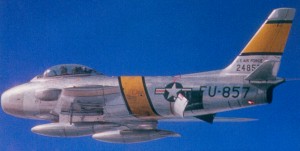
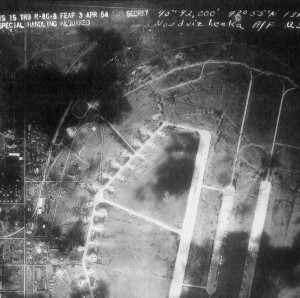
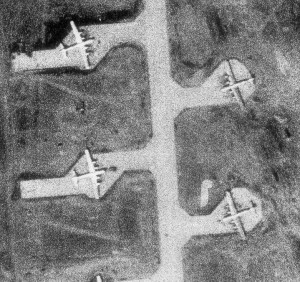
Murmansk Overflight
On the 8th May 1954 three RB-47E’s departed from RAF Fairford in Gloucestershire and headed out over the North Sea towards the Kola Peninsula. The lead aircraft, flown by Capt Harold Austin with co-pilot Carl Holt and navigator Maj Vance Heavilin, was briefed to photograph 9 Soviet airfields over a 600 mile stretch of territory from Murmansk to Arkhangelsk then Onega before turning southwest to escape into Finnish airspace.
After refuelling off southern Norway the aircraft headed North towards Murmansk. About 100 miles from the North of Murmansk the other 2 aircraft reversed course and watch as Hal Austin and his crew continued heading south towards the Soviet mainland. At around mid-day the RB-47E coasted in near Murmansk at 40,000 ft and 440 kts with the cameras running. Before long they were also joined by 3 MiG’s who confirmed their identity, but made no attempt to intercept them. Then, as they approached Arkhangelsk, 6 more MiG’s joined the RB-47E and began opening fire in an attempt to shoot the aircraft down, luckily, 40,000 ft was at the MiG’s maximum altitude and the aircraft had difficulty taking aim. Holt quickly returned fire using the tail cannon, but unfortunately this jammed after only a few shots had been fired.
Eventually, after a running battle lasting some time, a cannon shell from one of the MiG’s struck the RB-47E through the top of the port wing, knocking out the intercom and jamming the radio onto one frequency. As the aircraft flew closer to the Finnish border the MiG’s gradually dropped back, apart from one pilot who, in a throwback to a more chivalrous age, formated alongside the RB-47E and saluted the crew before turning back home.
Running desperately low on fuel, Hal Austin just managed to make it to a tanker, which launched out of Fairford when they heard of his predicament. After landing at Fairford the ground crewmen were somewhat taken aback to see cannon shell damage on an aircraft that had supposedly only been on a training sortie.
In recognition of their outstanding skill and bravery, General LeMay awarded Hal Austin and his crew 2 Distinguished Flying Crosses each
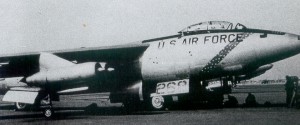
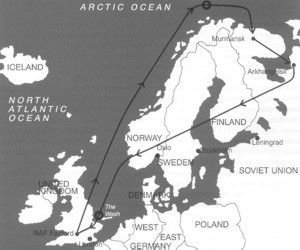
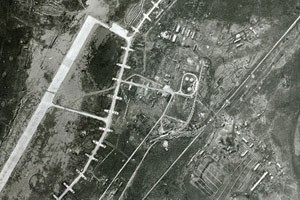
Project Homerun
During the seven-week period from 21 March to 10 May 1956 a combination of RB-47E and RB-47H aircraft flew almost daily across the North Pole to investigate activity on Russia’s northern border an USAF exercise known as Project Homerun. President Eisenhower personally approved a USAF project to map, both photographically and electronically, the northern border of Russia - a vast area that was virtually unknown territory. A special SAC detachment was formed for this operation comprising sixteen RB-47E photo-reconnaissance aircraft from the 10th Strategic Reconnaissance Wing, five RB-47H electronic reconnaissance aircraft from the 343rd Strategic Reconnaissance Wing and twenty eight KC-97 tankers from a variety of squadrons. All these aircraft were based at Thule in Greenland, some 690 miles north of the Arctic Circle, where operations were often conducted of 35 degress below zero.
The intelligence planners had divided the northern coast of Russia into 3 areas. The first was from the Kola Peninsula to Dikson on the Kara Sea, the second was from Dikson to Tiksi on the Laptev Sea and the third from Tiski to the Bering Strait. The aircraft normally flew as a formation, comprising an RB-47E and an RB-47H, each with a dedicated tanker. About 4 or 5 missions were flown each day, rotating aircraft and crews all sorties were flown in daylight. On only 3 or 4 occasions did Russian aircraft attempt to intercept the overflying RB-47’s - all were unsuccessful.
As the operation drew down it was decided to conduct a massed overflight. On 6-7 May 56 six RB-47E’s entered Siberia near Ambarchik, heading south in line abreast. The aircraft eventually turned east and photo-mapped the entire eastern portion of Siberia before exiting Russia over the Bering Strait near Anadyr before finally landing at Eielson AFB in Alaska.
Altogether 156 missions were flown from Thule in Project Homerun and not a single aircraft was lost a tremendous demonstration of skill and bravery by all the crews involved.
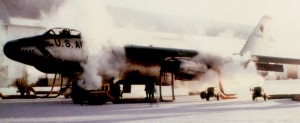
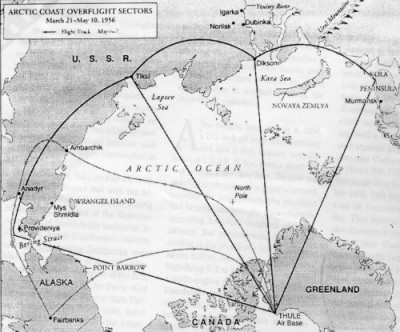
Vietnam Overture - Project Field Goal
After the defeat and withdrawal of the French forces in Vietnam, the country was split in two, however, the communist regime in North Vietnam was determined to create unrest both in South Vietnam and also in their immediate neighbour to the west, Laos. As the Laotian government lacked any reconnaissance capability they asked the USA for help. Initially this was provided by installing cameras in the C-47 used by the US air attache in Saigon, which then photographed northern areas of Laos, particularly the Plain des Jars, when he made routine visits between Saigon and Vientiane, the capital of Laos. However, when the C-47 was shot down over the Tran Ninh Highlands on 11 Feb 61, President Kennedy asked that alternative arrangements be made to ensure the situation could still be monitored.
In April 1961 a call went out in the Pacific Air Force for recce pilots who also had recent experience on the T-33, the standard US training aircraft at the time. The two pilots who responded were Captain Bob Caudry of the 15th TRS at Kadena and Lt Fred Muesegaes of the 5th TRS at Misawa. In early April 1961 at 13th Air Force HQ at Clark AFB in the Philippines both pilots were briefed for three days on their mission, Project Field Goal, essentially to keep the US appraised on what was happening in Laos. Although it was suggested that both pilots might like to be ‘sheep dipped’ and join the covert CIA funded Air America for this project, they declined and remained with the USAF. Later both pilots were joined at Clark by Major Vermillion, who would command the detachment but not fly any sorties, together with a Crew Chief and four enlisted men who would maintain the aircraft.
The Project Field Goal aircraft was a single RT-33, an improved version of the standard T-33 trainer. The RT-33, 35347, was originally supplied to the Philippine Air Force, but was later exchanged for a standard T-33. The Project Field Goal RT-33 carried a 12-inch focal length nose oblique camera and 6-inch cameras in the left, right and vertical ‘tri-met’ stations. To give the aircraft maximum range, an additional fuel tank was fitted in place of the rear seat. Bob Caudry flew the aircraft direct from Clark to the Royal Thai Air Force Base at Udorn in a single three hour ten minute flight and on arrival had to make a low pass down the runway to chase away the local water buffalos and civilians who used the runway as a road. Originally built by the Japanese in WW2, in 1961 Undorn was still basic in the extreme and was barely capable of operating jet aircraft. The US had built a single 7,500 ft concrete runway but apart from a low-powered radio beacon, that was about it and the usual airfield support facilities simply didn’t exist. The remainder of the detachment arrived on 20 Apr 61, together with a force of US Marines equipped with mobile fuel bladders and numerous tents.
Fred Muesegaes flew the first local orientation sortie. First this involved towing the RT-33 to the runway threshold to avoid the engine being damaged by the stones and general debris that littered the airfield. Then when he took off in a temperature of 100 degrees, the RT-33 vanished in a cloud of dust off the end of the runway as it staggered into the air. On their orientation sorties both pilots practiced using the radio beacon on the airfield to fly a teardrop approach into Urdorn in the event of bad weather, although both knew that the likelihood of the ADF display in the cockpit working correctly in a thunderstorm was minimal at best. Before each sortie the pilots travelled by Air America H-34 helicopter to Vientiane where they were tasked and briefed by the US Military Advisory Group, who also processed their film. The briefings left both pilots fully aware of the risks involved in overflying Laos, particularly the Plain des Jars, where an Air America H-34 had recently been shot down. They both knew that if they were shot down over Laos and had to eject, the chances of rescue were slim, they were on their own. Nevertheless, the presence of Air America at both Udorn and Vientiane was particularly helpful to the Project Field Goal team and they made full use of whatever facilities were available.
On 24 Apr 61 Bob Caudry flew the first Project Field Goal sortie, overflying the Plain des Jars at 20,000, before descending to 200ft to take oblique photographs along Route 13. However, he also overflew Vang Vieng airstrip where he encountered AAA fire from quad 50mm guns mounted on Dodge trucks, luckily none of the guns scored a hit and Bob was able to return safely to Udorn. After landing the pilot would then carry the film himself to Vientiane and help with interpreting what had been captured on the film, before later flying back to Udorn. Between them Bob Caudry and Fred Muesegaes flew a total of 16 recce sorties over Laos in the Project Field Goal RT-33 before it was decided to halt the sorties on 10 May 61.
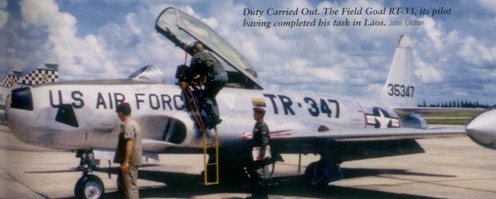
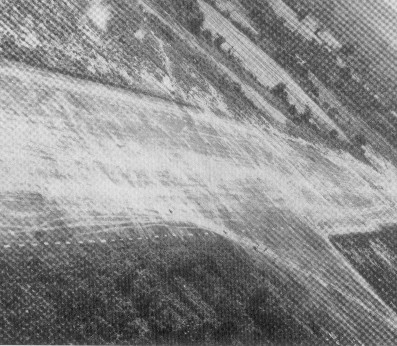
Project Dark Gene and Project Ibex
For many years little if any information could be found anywhere about Project Dark Gene and Project Ibex, athough both projects played a significant role in the ongoing programme of intelligence gathering targeted against the Soviet Union in the late 1960's and 1970's. Now, thanks to the efforts of Tom Cooper and Art Kremzel, some details of these projects are slowly beginning to emerge. There must be many personnel still alive who were involved in supporting these projects and I hope they will also eventually choose to contribute to our knowledge of what actually happened. In particular, I would like to try and obtain copies of any photographs showing the aircraft that actually took part in either project, as well as images of the Tracksman 1 and Tracksman 2 sites in Iran and the elusive USAF Col John Saunders.
Project Dark Gene
Throughout the Cold War the US conducted almost daily sorties around the edge of the USSR and Warsaw Pact countries, as part of a long-standing programme to identify and classify radars, SAM sites and any other electronic emissions of interest. The information gathered would then be used to try and establish the safest ingress routes to various targets for US and NATO bombers and fighter-bombers should WW3 ever break out. Given the huge landmass of the USSR, it was hardly surprising that some gaps in their radar coverage would be identified by these ELINT sorties and that, once these gaps had been found, it was almost inevitable that they would then be further exploited to try and gather even more useful intelligence.
Iran has a long border with what was then the southern part of the USSR and during the 1970’s, before the revolution that saw the Shah deposed, Iran maintained a good relationship with the USA. As part of this close relationship it was agreed that various long-range radars and listening posts could be established in Iran to enable the USA to monitor activities behind the Iron Curtain. However, it was also realised that, as the border between the USSR and Iran contained a number of significant gaps in overlapping radar cover, a low-flying reconnaissance aircraft could easily get over the border and take some useful photographs of areas of interest. When these cross-border flights were eventually detected they would have the added advantage of stirring up a hornets next of activity by other radar and SAM sites, allowing valuable intelligence on their location and operating frequencies to be scooped up by high-flying ELINT aircraft and listening posts positioned just the other side of the border. This ELINT activity was probably part of ‘Project Ibex’, but a more pro-active reconnaissance programme also took place around the same time.
From 1968 onwards, in recognition of the good relationship between the USA and Iran, 12 Northrop RF-5A aircraft were delivered to the IIAF, however, all was not quite as it seemed. In fact it appears that officially these aircraft never actually existed – their serial numbers were deleted from Northrop’s production list to make them ‘deniable’. In addition, the aircraft were actually flown by USAF pilots until 1971 under an operation known as Dark Gene and were used to make covert reconnaissance sorties across the border into the USSR, gathering mainly ELINT. It is understood that two of these aircraft were actually shot down inside the USSR whilst being flown by USAF pilots – they ejected and, presumably after pleading that they were actually training IIRAF pilots and simply got lost, they were quietly allowed to return to Iran, although this has yet to be confirmed. The RF-5A’s were also ‘A’ wired and had a secondary war role to carry a nuclear weapon and if necessary attack various targets in the USSR.
However, although the sub-sonic RF-5A’s were useful and presumably helped generate some interesting intelligence, it wasn’t really what the USAF pilots wanted to be piloting when they crossed over the border into the USSR – something with a little more grunt was called for and the RF-4 fitted the bill nicely. In addition, the Shah, who presumably was kept informed of the intelligence obtained by the RF-5A overflights, was keen for Iran to play an even more active role in this activity and offered to pay for the RF-4s. A solution was agreed – Iran would pay for the RF-4s and they would be flown by mixed crews of USAF and IIAF personnel, allowing the IIAF crews to gain valuable operational experience. In 1971 the first six RF-4s arrived in Iran, officially these were RF-4Es, however, sources involved have indicated that the airframes were actually highly unusual RF-4Cs. In fact it appears that these aircraft had been specially built for this operation and contained various specialised ELINT equipment and cost over $12 per airframe, making them the most expensive F-4s ever built. To date no authentic photos of these unique RF-5As and the expensive RF-4Cs have been discovered.
A number of these first six aircraft were delivered without the production number being officially listed and are generally referred to as UKIs – Unknown Iranians, some others were probably part of the 72-0266 to 720269 serials later acknowledged as delivered to Iran. Eventually, somewhere between 22 and 25 RF-4 airframes were delivered to Iran, the precise number is impossible to determine. As with the RF-5As, the RF-4Cs were also ‘A’ wired and could if necessary carry a nuclear weapon as a secondary role. Flown by mixed USAF and IIAF crews, the six RF-4Cs averaged two missions a month over the USSR from 1971 through to 1978. If they were shot down, the cover story was that the USAF crewmember was training the IIAF crewman and that they were on a navigation-training sortie, had got lost in bad weather and had inadvertently strayed over the border into the USSR. In actual fact it is understood that at least two of these ‘Iranian’ RF-4Cs were shot down inside the USSR by Soviet fighters, the first in 1973 and the second in 1976.
Some details of the 1973 incident have emerged. On 28 Nov 73 an Iranian RF-4C, flown by an IIAF pilot Maj Shokouhnia with USAF Col John Saunders in the rear seat, was detected inside the USSR. The RF-4C made a run for the border and was at Mach 1.4 when it was intercepted by a MiG-21 flown by Capt Gennady Eliseev. Col Saunders began firing out decoy flares to try and prevent the MiG from locking on a heat-seeking missile, eventually using all the 54 flares carried. The MiG-21 finally managed to launch two R-3S missiles at the RF-4C, but both missed. However, whilst turning hard to limit the chances of the MiG achieving a good lock-on, the RF-4C had lost some airspeed, allowing the MiG-21 to suddenly cut a corner and close up. It is presumed that Capt Gennady Eliseev then made a conscious decision to ram the RF-4C to prevent it escaping, as the MiG-21 aircraft rammed the aircraft from the left and below, near the engine nozzles, probably cutting off the tail of the RF-4C, throwing it into a high-speed dive. Capt Gennady Eliseev was killed in the collision and was posthumously decorated with the ‘Hero of the Soviet Union’ medal. Maj Shokouhnia and Col Saunders both ejected and were captured by Soviet ground forces. They used their cover story as briefed and, as the RF-4C had impacted the ground at something like Mach 2, there was little if any evidence the Soviets could use to prove otherwise.
It was quietly agreed that Maj Shokouhnia and Col Saunders would be returned to Iran in exchange for a cartridge from a Soviet reconnaissance satellite that had accidentally landed in Iran. Both Maj Shokouhnia and Col Saunders were decorated for their exploit. It is believed that Maj Shokouhnia, left Iran during the revolution in 1979, but later returned and was executed in 1980. Col Saunders returned to more normal duties and has never spoken officially about his activities in Iran during this period. In response to these overflights, the USSR began overflying Iran with the MiG-25RBSh and various attempts were made to intercept the aircraft with the IIAF F-4D and F-4E. Apparently, sometime in 1976, one IIAF F-4E eventually managed to hit a MiG-25RBSh, but it made it back over the border into Russia before it crashed. The loss of the second RF-4C over Russia later in 1976 may well have been in response to this incident. The arrival of the IIAF F-14 Tomcat put an end to the overflights of Iran by the MiG-25RBSh, particularly after one had been intercepted over the Caspian Sea in Oct 1978 by two IIAF F-14s, who then maintained a radar lock-on to the MiG-25 for over a minute, no doubt giving the MiG-25 pilot something to think about.
At present that is all that is known about Operation Dark Gene, but hopefully as time goes on more details will emerge of the project in general and about the loss of the two RF-5As and the second IIAF RF-4C in 1978 in particular.
Project Ibex
Project Ibex was launched in around 1974, with Iran and the USA as equal partners, however, Iran paid almost the entire cost of the project, some $500 million, to the main US contractor - Rockwell Inc. Project Ibex was a joint CIA+NSA / Iran enterprise for building and operating a series of observation and listening posts along the Soviet border, as well as for the purchase and operation of a number of reconnaissance aircraft.
There were five ground stations; three jointly run by the IIAF/USAF crews and two operated by the CIA or, more likely, the NSA. The CIA-crewed stations were established at Bushehr (Tracksman 1) and at Kapkan (Tracksman 2). The most distinct functions of these five intelligence-gathering stations were: to monitor the radio and telemetry traffic of the Soviet armed forces in southern USSR, especially to find evidence of heightened military activity; to monitor Soviet missile testing; and to receive high resolution photographs from the orbiting spy satellites.
USAF aircrews flying ELINT missions out of U.S. bases in such places as Okinawa and Alaska were alerted by Tracksmen messages to watch for Soviet missiles. These sites were considered so sophisticated that Stanfield Turner described them as systems built for the 21st century. Certain elements of the IIAF were also included in Project IBEX and were tasked with providing air defense for all five stations; all the stations were also surrounded by barbed-wired and mine fields and could be quickly blown up in the event of some unauthorized personnel managing to gain entry.
Additionally, two DHC-4 Caribou STOL aircraft were purchased solely for the task of supplying logistics and transporting personnel to the remote IBEX stations. With this in mind it’s interesting that, although the IIAF never operated the DHC-4 Caribou, one is still on display at the IIAF Museum, in Mehrabad, Tehran - in full IIAF markings! The fate of the other Caribou is unknown. The original plan for IBEX also called for two of IIAF’s Boeing 707s and two of the six P-3F Orion patrol aircraft to be converted for ELINT roles. However, rather than the P-3F Orion, the IIAF opted instead to purchase four C-130E/Hs, mainly because they were capable of operating from rough airfields at high altitudes, whilst carrying a significant ELINT payload. The four chosen C-130E/Hs were modified by E-Systems, Greenville Division, while work on one Boeing 707-3J9C was started in 1975.
Aircraft equipped with IBEX sub-systems are understood to have had 13 operator positions, an ELINT sub-system capable of detecting and classifying emitters, and an oblique and vertical camera subsystem for surveillance photography. The conversion involved extensive structural modification and reinforcement, including the installation of a range of antennas on the aircraft’s wings and fuselage, a retractable direction-finding array under the belly, a new INS, modified power and cabin-environment systems, and special enlarged pods under the outboards of their outer engines. Hercules of the IBEX project carried oblique long focal length cameras to photograph Soviet radar transmitters from high altitudes, as well as equipment for monitoring and recording radio and radar signals. According to unconfirmed reports, some parts of the IBEX-equipment were built into at least two IIAA (Army Aviation) Aero Commander-560s. Note that both types - the C-130 and Aero Commander-560 - are known to have been used extensively for flying recce sorties along and possibly beyond the Soviet borders, since the early 1960s.
Aside from tracking Soviet missile testing, the Iranian government used the IBEX system to detect/locate, track and identify, and also characterize radar signals originating in most of neighboring countries, particularly Iraq. Prior to Rockwell getting that contract, an Israeli project proposal had been rejected by the IIAF as "insufficiently advanced". Nevertheless, after the installation of IBEX in Iran, a rumour surfaced that the Shah was not particularly pleased with "malfunctioning equipment“, which forced Rockwell to call the CIA for direct help. Additionally, at a very early stage, the project caused great concerns in Washington and elsewhere, because Rockwell employed some ex-NSA specialists to work alongside Iranian trainees, some of whom supposedly showed signs of mental disorder after working for some time with the equipment in the USA.
It remains unclear how the problems with the IBEX were solved, however, the system became operational and all four IBEX C-130H (nicknamed "Khofaash" or Bat whilst in Iranian service) were continuously flown along the Soviet border. Together with the five ground stations, they became part of the IIAF’s Electronic Reconnaissance Wing, under command of Lt. Gen. Abdollah Assrejadid. The rest of this unit seems to have been composed of two squadrons equipped with RF-4Es and RF-5As, respectively. All the Khofaashs and the single Boeing 707 were normally stationed at Mehrabad AB, but there were prominent "forward bases" established at Tabriz and Hamedan, and possibly at other places like Shiraz and Zahedan as well. Although it is certain that dozens of operational missions were flown, details about only one are known: it occurred in October 1978, when a single Boeing 707 escorting two F-14s in an intercept of a Soviet MiG-25R over the Caspian Sea. This engagement was tracked from an immense range (over 200km) without any problems - and the CIA crews, as well as few USN people permitted to see some of result, were highly pleased with intelligence gathered.
The overthrow of the Shah of Iran in 1978 -1979 and the creation of an anti-USA, hard-line Islamic Republic led by Ayatollah Khomeini, quickly brought an end to both projects. What became of the sites is unknown, but given the contingency plans already in place, I imagine both sites, in particular the equipment, were totally destroyed before the personnel were evacuated, probably to Turkey. I presume the planes involved remained part of the new IIAF, but apart from the single DHC-4 Caribou in the IIAF Museum at Mehrabad, Tehran, nothing is known about about their eventual fate. From what has been pieced together to date, it would appear that both projects were a success and, had they continued, they would have more than justified the risk and expense involved.
The only survivor of Project Ibex still flying is the single Iranian ELINT Boeing 707-3J9C (ex 5-8316, c/n 20834) shown here. The aircraft is believed to have been modified in 1975 by E-Systems Greenville Division from its original tanker/transport configuration. After conversion the aircraft was understood to have been equipped with 13 operator positions, an ELINT sub-system capable of detecting and classifying emitters, together with oblique and vertical cameras mounted behind a sliding door under the forward fuselage - the ELINT receivers were mounted in the wing root fairing. During its participation in Project Ibex the aircraft would have flown at high level close to the border with the Soviet Union gathering data on surviellance radars and air defence systems, looking for potential 'holes' that could be exploited by B-52s in the event of WW3.
The aircraft is currently assigned to the 1st Tactical Air Base, Tehran-Mehrabad International Airport. No titles are visbile on the aircraft and it is assumed that it is still used to gather ELINT, however, it's not known whether the receiver systems have been continually updated, . Although the Iranians like to believe that their aerospace and electronic capabilities are quite advanced, in reality they lag some way behind the West, so unless they have managed to procure or more likely reverse engineer a relatively current ELINT system, its current capability would be fairly limited.
Updated 15 Feb 09
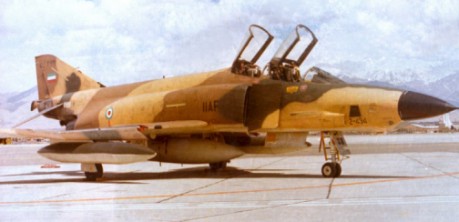
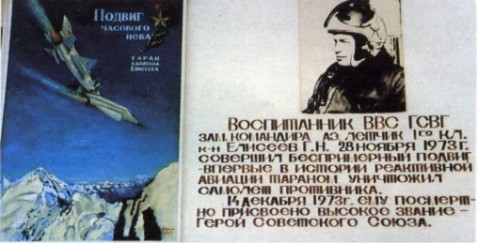
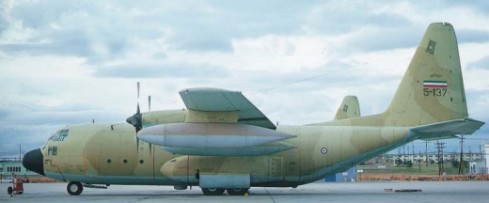

Foxbats over Sinai
In March 71 four MiG-25’s were delivered to Egypt by Antonov AN-22 Cock transport aircraft, along with Soviet pilots and technicians. The first aircraft was re-assembled and flew from Cairo West airfield on 26 Mar 71 - on this test flight, which was monitored by Israeli and US intelligence services, the aircraft reached Mach 3.2 and 63,000ft. On the second test flight the aircraft reached 73,000ft, displaying a performance well in excess of the Israeli F-4 Phantom. It was initially thought that the Foxbat’s were the interceptor version, because at this time the existence of the Foxbat B was unknown.
On 10 Oct 71 two of the Foxbat’s made a high altitude run down the Mediterranean at Mach 2.5 only 17 miles of the coast of Israel - two IAF F-4’s attempted to intercept the Foxbat’s without success. On 6 Nov 71 a single Foxbat really embarrassed the IAF by flying directly over Sinai at Mach 2.5 and 75,000ft to take photographs of Israeli defensive positions in the Mitla Pass area. However, the IAF were waiting for the Foxbat and had 2 stripped down F-4E’s on standby armed with AIM-7E Sparrow missiles. The MiG 25 crusing at 76,00ft was attacked head-on by the two F-4’s in a ‘snap-up’ high-angle attack from 44,000ft. However, the attack failed because the proximity fuses on the AIM-7E missiles could not cope with the Mach 3 closing speed of the Foxbat and by the time they detonated the aircraft was out of their lethal radius. Nevertheless, it must have given the Foxbat pilot a rather unpleasant surprise when he saw the missiles hurtling up towards him!!
The second overflight occurred on 10 Mar 72 when 2 Foxbat’s again overflew Sinai at Mach 2.5 and 75,000ft, this time to photograph the Israeli airbase at Refidim near Bir Gafgafa. The final overflight of Sinai occurred on 16 May 72 when two Foxbat’s flew down the length of the western coast of Sinai from Port Said to Sharm el Sheikh photographing various Israeli defensive positions. However, the aircraft were always flown by Russian pilots and maintained by Russian technicians. Eventually, Egyptian President Anwar Sadat grew increasingly frustrated that the USSR would neither train Egyptian pilots to fly the Foxbat’s or actually sell the aircraft to Egypt. In Jul 72 Sadat gave the Soviet Union one week to either sell the Egyptians the aircraft or remove them and by 16 Jul 72 the Foxbat’s were back in Russia.
Towards the end of the 1973 Yom Kippur War on 22 Oct 73, with Egypt on the point of agreeing a cease fire, 4 Foxbat’s returned to Egypt and 2 aircraft then conducted a reconnaissance sortie along the Suez Canal. The evidence these aircraft collected, which confirmed the threat that General Sharon’s army on the west bank of the Suez Canal posed to the Egyptain 3rd Army, convinced Sadat to agree to a ceasefire.
A number of Foxbat’s were later again operated by Soviet pilots and groundcrew, again from the Cairo-West airfield in 1974, but concentrated their activity against US Naval activity in the eastern Mediterranean. President Sadat once boasted that a Foxbat had even overflown Tel Aviv, but this has never been confirmed. Sadat again grew tired of the Soviet presence, together with his lack of authority over the use of the Foxbats. The Foxbat's were eventually flown back to Russia between 12-13 Sep 1975 aboard a number of Antonov 22 Cock transport aircraft.
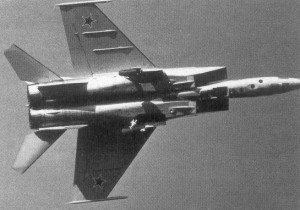
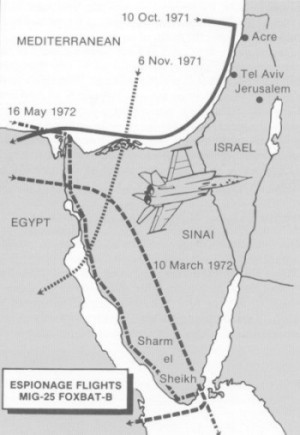
The Falklands Campaign – the Chilean connection
Since the end of the Falklands War in 1982 there has been considerable speculation about the support and facilities provided by Chile to the UK. The recent publication of ‘The Official History of the Falklands Campaign’ by Sir Lawrence Freedman has at last shed fresh light of what actually happened.
When the Falklands War broke out, Chile still had a long-standing dispute with Argentina over access to the Beagle Channel, making the chance of military co-operation between Britain and Chile a distinct possibility. However, considerable misgivings about any such co-operation existed on both sides – Chile was wary of being seen to support an ‘old-world’ power in a dispute against its neighbour and Britain viewed the many human rights abuses in Chile with evident distaste. Nevertheless, despite the problems identified by both sides, needs must -as is so often the case in times of crisis. The exact details of what co-operation was agreed between the two countries remains unclear, but it was always to be covert.
Chilean bases offered UK forces the only realistic chances they had of decent facilities within reasonable reach of both Argentina and the Falklands Islands. Chilean good intentions were clear when the offered to delay the handover of HMS Norfolk which had been sold to the Chilean Navy on 6 Apr 82. The age and equipment on board this old warship was of little real benefit to the Task Force, however, they also offered to delay the handover of the Royal Fleet Auxiliary Tanker, HMS Tidepool, which was of far more use. This vessel refuelled at Curacao and on 14 Apr 82 sailed to join the Task Force before playing a vital role in the re-capture of South Georgia.
Recognising how little direct support the Royal Air Force could give to the Task Force, UK MOD were very keen to base Nimrod Maritime Patrol Aircraft (MPA) in southern Chile where they could be used to locate and identify Argentinean warships. Its unclear from the official history whether the UK MOD also intended to also deploy a Nimrod R1 ELINT aircraft to southern Chile as part of this arrangement, but the similarity of the two aircraft would help disguise the presence of the R1, whilst enabling the aircraft to eavesdrop on Argentinean communications, as well as identifying the location of radars and other electronic transmissions. To encourage Chilean co-operation, Britain was prepared to offer to sell to Chile a number of Hunter aircraft that they have previously expressed an interest in acquiring. The Chilean authorities, were slowly warming to the idea of Nimrod aircraft operating from one of their air bases, however, to ensure the operation remained covert, they preferred that the aircraft operate from the island of San Felix, some 1,900 miles from the likely area of operations, rather than directly from an airbase in southern Chile. Nevertheless, doubts still remained and the British Ambassador in Chile warned that if RAF aircraft flew into Argentinean airspace from Chile ‘short term military benefits will be outweighed by long-term political consequences’.
As well as the Hunter fighter aircraft, Chile had also previously expressed an interest in purchasing a number of Canberra PR9 reconnaissance aircraft, although they had already rejected three refurbished Canberra PR9s for being too expensive. Even before the Falklands War broke out, the RAF had offered to lend the Chilean Air Force, the Fuerza Aerea De Chile (FACH), some of their own Canberra PR9s to conduct a land survey over Chile. As this offer still stood, a proposal was made to the Chilean authorities that two Canberra PR9s would be sold to Chile, at probably half the previously quoted price, and delivered by RAF crews. In Chile the RAF crews would train the FACH crews to fly the Canberra PR9, whilst carrying out ‘training’ photographic reconnaissance sorties from an air base in southern Chile. Exactly where these ‘photographic reconnaissance sorties’ would take place is not specified, but it is believed that they would have targeted the Falklands Islands, to provide information on the disposition of Argentinean forces, in advance of a landing. This proposal got as far as the Canberra crews being selected and put on standby to move, before it was cancelled by Chile because they believed the aircraft would be identified and probably shot down.
Nevertheless, the Chilean authorities were still keen to acquire the two Canberra PR9s and after further negotiations it was agreed on 16 Apr 82 that they would be sent to Chile on loan, trial or for purchase, accompanied by two supporting C-130 Hercules, all in Chilean markings. Although the Chilean authorities had no intention of purchasing any Nimrod aircraft, they also agreed that Nimrod’s would be permitted to fly anywhere in Chilean airspace on transit and would even be permitted to land in an emergency. Chile also agreed to supply the UK with details of any Argentinean surface movements they acquired. It was recommended that the two Canberra’s and two C-130’s depart for Belize as a matter of urgency, to pre-position for the journey to Chile. The four aircraft soon arrived in Belize and on 26 Apr 82 the two C-130s, disguised in Chilean markings applied in Belize, arrived in Santiago – the Canberra’s were expected to arrive just after dawn on 30 Apr 82.
However, for a variety of political reasons, Chile suddenly began to get cold feet and warned Britain that, if the Canberra PR9 operations were detected by Argentina or the Press, the Canberra detachment of 18 officers and 24 SNCOs who had arrived on one of the supporting C-130s would be required to leave Chile immediately. Then on 27 Apr 82, a report in the Daily Star suggested that F-4 Phantom fighters and supporting Victor tankers had secretly flown to Punta Arenas, an airbase in southern Chile. This report was completely untrue – the F-4s and Victors were destined for Ascension Island, just north of the equator, where they remained for the duration of the war.
However, as further newspaper reports appeared suggesting that Chile had already given permission for the RAF to use their airbases, it was decided to delay the arrival of the Canberra’s until things had quietened down. Eventually the Chilean authorities gave permission for the Canberra’s to arrive on 3 May 82, but by then the UK had begun to reassess the need for the Canberra’s to fly reconnaissance sorties over the Falkland Islands – perhaps by this time they had received suitable satellite imagery from the USA. Eventually three Canberra PR9s were delivered to Chile on 15 Oct 82 – long after the war had finished. The three aircraft, RAF serials XH-166, XH-167 and XH-173, became FACH serials 341, 342 and 343 respectively – 342 was subsequently lost in a crash and the other two aircraft have now retired to the Aeronautics Museum in Santiago. A number of Hunters were also air freighted to Chile in 1982 as part of the arrangements for providing support of UK operations in the South Atlantic. Chile also collected information on Argentinean air movements, using a powerful radar supplied by Britain that was sited near the border with Argentina. Although it has never been exactly confirmed, Britain probably supplied the S259 radar used by 1 Air Control Centre (1ACC) to Chile. The information obtained by the radar was quickly relayed back to the UK via a satellite link and then onto the Task Force, enabling the air defence Sea Harriers to anticipate the eventual arrival of Argentinean aircraft in the Task Force area of operations.
There is, however, one report of Canberra PR9s operating in Chile during the Falklands War which remains unexplained. Jon Snow, a highly experienced TV news reporter, who spent a considerable time in South Africa and became familiar with the Canberra, reported seeing more than one PR9 at Punta Aernas during the war. The official history makes no mention of this and states that the PR9s never got further south than Belize, so it's really a question of who you believe. After the Falklands War one PR9 was briefly decorated with a large drawing of a winking Snoopy, the Beagle dog in the 'Peanuts' cartoon strip, possibly an oblique reference to clandestine operations over the Beagle channel off South America. But until this report can be independantly confirmed with genuine photographic evidence, it must remain just speculation and could simply be Jon Snow, a well known left-wing rabble-rouser, getting up to his old tricks.
The Nimrod MPA proposal was also a success. A single aircraft, supported by a VC-10, operated from San Felix Island, flew at night to the Chilean air base at Conception where it refuelled, before flying out into the South Atlantic. The first sortie was flown on 9 May 82, followed by others on 15 May and 18 May and although Admiral Woodward was keen for further sorties between 19-21 May, the Chilean authorities were insistent that the operation end and the Nimrod was withdrawn. It is still unclear whether any of these three sorties were actually undertaken by a Nimrod R1 of 51 Sqn, rather than a Nimrod MPA. A single Nimrod R1, XW664, was certainly involved in the Falklands War and returned to RAF Wyton on 22 May 82, four days after the last sortie was flown from San Felix Island – a timely coincidence!!
In summary, Chilean support to UK forces during the Falklands War was far more than was realised at the time. The subsequent delivery of three Canberra PR9 aircraft was not significant, but the Nimrod sorties in May 82 did provide what has been described as ‘limited, but significant information’ – perhaps disguising an even greater role undertaken by a Nimrod R1. Undoubtedly the most significant assistance provided by Chile, which can be confirmed with certainty, was in allowing a powerful radar to be sighted near the border with Argentina to give advance warning of Argentinean fighters taking off for sorties against the Task Force. Certain previous histories of the Falklands Air War, noteably 'Sea Harrier over the Falklands' by Commander Sharkey Ward, have commented on how the RN Sea Harriers often had an uncanny ability to be in the right place at the right time when attacking Argentinean fighters arrived. We now know that it certainly wasn’t due to the telepathic ability of the brave, but rather self-serving and egotistical ‘Sharkey’ Ward, but was yet again down to the timely gathering and dissemination of accurate intelligence.
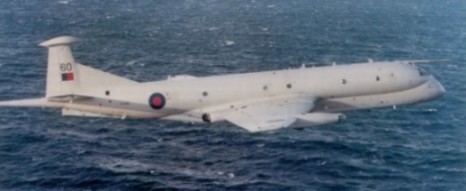
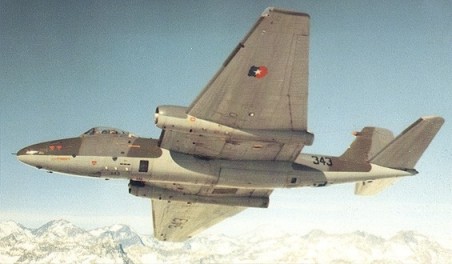
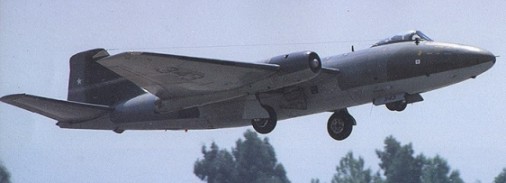
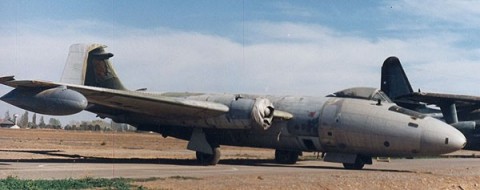
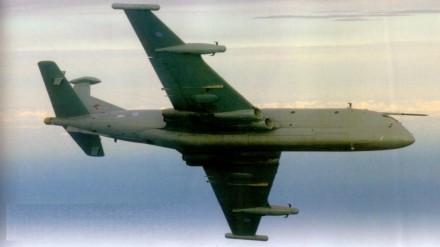
Operational Losses
| Date of Event | Aircraft Type | Unit | Location | Claimed By | Notes |
|---|---|---|---|---|---|
| 15-Nov-45 | PBM-5 | USN | Port Arthur | Unknown | Shot at but escaped |
| 20-Feb-46 | PBM-5 | USN VP-26 | Darien | Unknown | Damaged but escaped |
| 22-Apr-46 | C-47 | USAAF | Tullin Nr Vienna | Shot at but escaped | None |
| 09-Aug-46 | C-47 | USAAF | Ljubljana Yugoslavia | Dragomir Zecevic in a YAK-3 | Shot at and crash landed 5 Survivors |
| 19-Aug-46 | C-47 | USAAF | Near Bled Yugoslavia | Vladimir Vodopivec in a YAK-3 | 5 Fatalities |
| 1946 | Dakota | RAF | Near Nis Yugoslavia | Zelijko Cermelj in a YAK-3 | Forced to land |
| 27-Oct-48 | P-38 Lightning | Italian Air Force | Yugoslavia | Unknown | Disappeared on a sortie |
| 07-Jan-49 | Spitfire FR18 x 4 | Royal Air Force | Sinai near Faluja | Israel Spitfires | Shot down on a recce sortie |
| 22-Oct-49 | RB-29 | USAF | Sea of Japan | Shot at but escaped | None |
| 08-Apr-50 | PB4Y-2 | USN | Baltic Sea | Lt Ivan St Lt’s Dokin Gerasimov & Lt Sataev all in La-11s | 10 Fatalities at least 8 crewmembers were sighted in prison but all subsequently disappeared |
| 24-Apr-50 | P-38 | USAAF | Unknown | Mj Keleinikov claimed as shot down but unconfirmed | None |
| Apr-50 | B-26 | USAF | Unknown | P Dushin | Claimed as shot down but unconfirmed |
| Apr-50 | B-26 | USAF | Unknown | V Sidorov | Claimed as shot down but unconfirmed |
| Apr-50 | F-51 x 2 | USAF | Unknown | Nikolia N Guzhov | Claimed as shot down but unconfirmed |
| 11-May-50 | B-24 | USAF | Unknown | Kap II Shinkarenko | Claimed as shot down but unconfirmed |
| 15-Jul-50 | RB-29 | USAF | Nr Permskoye airfield | Unknown | Shot at but escaped |
| 04-Sep-50 | Twin-Engined Bomber | Soviet | Korean West coast nr 38th parallel | Unknown | Approached and fired at USN formation and was then shot down crew presumed dead |
| 08-Oct-50 | F-80 x 2 | USAF | Nr Vladivostok | Unknown | Allegedly strafed an airfield - unconfirmed |
| 04-Dec-50 | RB-45C | USAF | Nr Antung N Korea | Unknown | Unknown |
| 06-Nov-51 | P2V-3 | USN | Nr Vladivostok | Lukashyev & Shchukin | 10 fatalties |
| 18-Nov-51 | C-47 | USAF | Nr Papa in Hungary | St Lt Kalugin in MiG-15 | Forced to land no casualties |
| 01-Apr-52 | Unknown | USN | China Sea | Unknown | Shot at but escaped |
| 29-Apr-52 | DC-4 | Air France | Nr Berlin | Two MiG-15s | "Shot at aircraft damaged 3 wounded" |
| 13-Jun-52 | RB-29 | USAF | Sea of Japan | Kap Fedotov & St Lt Proskurin | 12 fatalities a member of the crew was sighted in prison. |
| 16-Jun-52 | PBY-5A | Sweden | Baltic Sea | Unknown | Casualties unknown |
| 13-Jul-52 | DC-3 | Sweden | Baltic Sea | Kap Osinskii | Casualties unknown |
| 31-Jul-52 | PBM-5S2 | USN | Formosa | Unknown | Shot at but escaped |
| 20-Sep-52 | P4Y-2S | USN | China coast | H Zhongdao | Shot at but escaped |
| 07-Oct-52 | RB-29 | USAF | Nr Kurile Islands | St Lt’s Zheryakov & Lesnov | 8 fatalities |
| 08-Oct-52 | C-47 | USAF | Nr Berlin | Unknown | Shot at but escaped |
| 23-Nov-52 | P4Y-2S | USN | Shanhai | Unknown | Shot at but escaped |
| 29-Nov-52 | C-47 | CIA | China | Unknown | 2 fatalities |
| 12-Jan-53 | B-29 | USAF | Manchuria | Unknown | 3 fatalities |
| 18-Jan-53 | P2-V5 | USN | Nr Formosa | Unknown | Shot down by ground fire - 6 fatalities |
| 10-Mar-53 | F-84G | USAF | W Germany nr Czech border | Jaroslav Sramek | One F-84G shot down by a MiG-15 pilot ejected and survived |
| 12-Mar-53 | Lincoln RAF | W Germany Nr Elbe | Unknown | Shot down by Soviet MiG-15s 7 fatalities | None |
| 17-Mar-53 | Viking | BEA | Nr Berlin | Unknown | Shot at by Soviet MiG-15s but escaped |
| 22-Mar-53 | B-50 | USAF | Unknown | Unknown | Shot at by Soviet MiG-15s but escaped |
| 15-Mar-53 | RB-50 | USAF | Kamchatka | Unknown | Shot at by Soviet MiG-15s but escaped |
| 29-Jul-53 | RB-50 | USAF | Sea of Japan near Vladivostok | St Lts Rybakov & Yablonovskii | Shot down by Soviet MiG-15s 1 survivor 15 fatalities |
| Aug-53 | Canberra | RAF | Near Kapustin Yar | Unknown | Aircraft shot at and damaged by MiGs - unconfirmed |
| 17-Aug-53 | T-6 | USAF | Korea | Unknown | Shot down by N Korean ground fire 1 fatality 1 survivor |
| 02-Oct-53 | PBM-5 | USN | Yellow Sea | Unknown | Shot at by Soviet MiG-15s but escaped |
| 30-Dec-53 | F-86 x 4 | USAF | Korea | Unknown | Shot at by four Mig-15s but escaped |
| 27-Jan-54 | RB-45C | USAF | Yellow Sea | Lt Eric Beecroft | Shot at by MiG-15s but escaped 1 MiG shot down by F-86 |
| 12-Mar-54 | AD-4 x 2 | USAF | Near Czech border | Unknown | Shot at by Czech MiGs but escaped |
| 29-Apr-54 | RB-46C | RAF on loan from USAF | Near Kiev | Unknown | Shot at whilst on overflight but escaped undamaged |
| 08-May-54 | RB-47 | USAF | Nr Murmansk | Unknown | Exchanged gunfire with MiG-17s whilst on overflight damaged but escaped |
| 26-May-54 | B-17 | RoCAF | China | Unknown | Shot Down over Fujian by PLA AAA - 4 fatalties |
| 03-Jun-54 | Transport Aircraft | Belgian | Yugoslavia | Unknown | Shot at by MiGs but escaped 1 fatality |
| 23-Jul-54 | DC-4 | Cathy Pacific | Hainan | Unknown | Shot down by Chinese La-9 fighters 10 fatalities 8 survived |
| 26-Jul-54 | AD-4 x 2 | USN | Hainan | Lt Tatham & Ens Crooks Lt’s Damien Rochford Wahlstrom Ribble and Lt Cdr Salsig | Attacked by 2 Chinese La-9 fighters two La-9s shot down. Both aircraft victories shared by the various pilots involved |
| 04-Sep-54 | P2-V | USN | Siberian Coast | Unknown | Shot down by Soviet MiGs 10 fatalities |
| 12-Sep-54 | PB4Y | RoCAF | China | Unknown | Shot Down by PLA AAA near Xiamen - 9 fatalties |
| 07-Nov-54 | RB-29 | USAF | Sea of Japan nr Hokkaido | Kap Kostin & St Lt Seberyakov | Shot down by Soviet fighters but crash landed 1 fatality and 10 survivors |
| 19-Jan-55 | Unknown | US Army | Korea | Unknown | Shot down by ground fire 1 fatality and 1 survivor |
| 05-Feb-55 | RB-45C | USAF | Off Korean coast | Unknown | Attacked by 8 MiG-15s escorting F-86s shot down 2 MiGs |
| 17-Apr-54 | RB-47 | USAF | Kamchatka | Kap Korotkov & Lt Sazhin | Shot down by MiG-17s 3 fatalities |
| 10-May-55 | F-86 x 8 | USAF | Off Korean coast | Cpt Robert Fulton and 1st Lt Burt Phythyon | Eight F-86s attacked by 12 MiGs 2 MiGs shot down all F-86s undamaged |
| 22-Jun-55 | RT-33A | RoCAF | China | Unknown | Shot Down near Fujian by PLA MiG-15 over Jiangxi by PLA MiG-17 - 1 fatality |
| 22-Jun-55 | P2-V | USN | Bering Straits | Unknown | Attacked and damaged by 2 MiG fighters aircraft crash landed in Alaska 11 survivors |
| 27-Jul-55 | Constellation | El Al | Bulgaria | Unknown | Attacked and shot down 40 fatalities |
| 18-Aug-55 | LT-6 | USAF | Korea | Unk | Shot down by ground fire 1 fatality |
| 22-Jun-56 | B-17 | RoCAF | China | Unknown | Shot Down over Jiangxi by PLA MiG-17 - 11 fatalties |
| 22-Aug-56 | P4-M | USN | Wenchow | Z Song | 16 fatalities |
| 10-Sep-56 | RB-50 | USAF | Sea of Japan | Unknown | Disappeared possibly shot down |
| 31-Oct-56 | Canberra | RAF | Syria | Unknown | Shot down - 1 fatality |
| 10-Nov-56 | C-46 | RoCAF | China | Unknown | Shot Down over Jejigxi by PLA MiG - 9 fatalties |
| 15-Apr-57 | RF-84F | RoCAF | China | Unknown | Crashed whilst being pursued by PLA MiG - 1 fatality |
| 05-Nov-57 | B-26 | RoCAF | China | Unknown | Shot Down - 5 POWs |
| 23-Dec-57 | T-33 | USAF | Albania | Unknown | Possibly shot down |
| 18-Feb-58 | RB-57A | RoCAF | Yellow Sea | Unknown | Shot down over Shandong by PLAN J-5A - 1 fatality |
| 06-Mar-58 | F-86 | USAF | N Korea | Unknown | Shot down by ground fire 1 survivor |
| 17-Jun-58 | RF-84F | RoCAF | China | Unknown | Crashed in Fujian whilst pursued by PLA MiG15s - 1 fatality |
| 27-Jun-58 | C-118 | USAF | Soviet Armenia | Kap’s Svetlichnikov & Zakharov | Shot down by Soviet MiG-17s all 9 crew survived |
| 02-Sep-58 | C-130A | USAF | Soviet Armenia near Yerevan | St Lt’s Gavrilov Ivanov Kucheryaev & Lopatkov | 6 fatalities returned to USA - 11 unaccounted for. Rumours that some crew members died in Soviet prisons |
| 29-Sep-58 | C-46 | RoCAF | China | Unknown | Shot Down by PLA - 3 fatalties |
| 02-Oct-58 | C-46 | RoCAF | China | PLA AAA | Shot Down - 5 fatalties |
| 31-Oct-58 | RB-47 | USAF | Black Sea | Unknown | Attacked by Soviet fighters but survived |
| 07-Nov-58 | RB-47 | USAF | Baltic Sea | Unknown | Attacked by Soviet fighters but survived |
| 07-Nov-58 | RB-47 | USAF | Sea of Japan | Unknown | Attacked by Soviet fighters but survived |
| 29-May-59 | B-17 | RoCAF | China | Unknown | Shot down near Guandong by MiG-17PF - 14 fatalities |
| 16-Jun-59 | P2-V | USN | Sea of Japan | Unknown | Attacked by Soviet fighters but survived |
| 07-Oct-59 | RB-57D | RoCAF | China | SA-2 missile | Shot down near Beijing - 1 fatality |
| 01-May-60 | U-2 | CIA | Sverdlovsk | SA-2 missiles | Shot down pilot later returned to USA |
| 25-May-60 | C-47 | USAF | E Germany | Soviet MiGs | Forced down all 9 crew returned to USA |
| 01-Jul-60 | ERB-47H | USAF | Barents Sea | Kap Vasilii Polyakov | Shot down 2 survivors 4 fatalities |
| 15-Feb-61 | P4Y | RoCAF | China | Burmese fighter aircraft | Shot down near Thai-Burma border - 5 fatalities |
| 02-Aug-61 | RF-101A | RoCAF | Fukien | Unknown | Shot down by PLA AAA - 1 fatality |
| 06-Nov-61 | RB-69A | RoCAF | China | SA-2 missile | Shot down by PLA AAA - 13 fatalities |
| 05-Jun-62 | DC-3 | Sweden | Baltic | Unknown | Shot down |
| 16-Jun-62 | Catalina | Sweden | Baltic | Unknown | Shot down |
| 01-Aug-62 | RB-69A | RoCAF | China | Unknown | Believed shot down - 13 fatalities |
| 09-Sep-62 | U-2A | RoCAF | China | SA-2 missile | Shot down over Nanchang - 1 fatality |
| 27-Oct-62 | U-2C | USAF | Cuba | SA-2 missile | Shot down |
| 17-May-63 | Helicopter | US Army | N Korea | Unknown | Shot down 2 survivors |
| 19-Jun-63 | RB-69A | RoCAF | China | Unknown | Shot down 14 fatalities |
| 06-Aug-63 | LT | USAF | N Korea | Unknown | Shot down |
| 01-Nov-63 | U-2C | RoCAF | Shanghai | SA-2 missile over Jiangxi | Shot down |
| 24-Jan-64 | T-39 | USAF | E Germany | Unknown | 3 fatalities |
| 10-Mar-64 | RB-66C | USAF | E Germany | Unknown | |
| 11-Jun-64 | RB-69A | RoCAF | China | Unknown | Shot down by PLA MiG-17F |
| 07-Jul-64 | U-2C | RoCAF | China | Shot down by SA-2 missile over Fujian | 1 survivor |
| 18-Dec-64 | RF-101A | RoCAF | China | Unknown | Shot down by PLAN J-6 |
| 10-Jan-65 | U-2C | RoCAF | China | SA-2 missile | 1 fatality |
| 18-Mar-65 | RF-101 | RoCAF | China | Unknown | Shot down by PLA MiG-19 - 1 fatality |
| 27-Apr-65 | ERB-47H | USAF | N Korea | Unknown | Attacked by N Korean MiGs crew survived |
| 31-Aug-65 | C-123B | RoCAF | China | Unknown | Believed shot down over South China Sea |
| 27-Jun-65 | C-123B | RoCAF | China | Unknown | Shot down by Viet Kong over Saigon |
| 11-Sep-65 | RB-57F | Pakistan | India | SA-2 missile | Aircraft damaged but made a crash landing |
| 01-Oct-65 | U-2C | RoCAF | China | Unknown | Shot down by PLA SA-2 over Inner Mogolia |
| 14-Dec-65 | RB-57F | USAF | Black Sea | SA-2 missile | Shot down- 2 fatalities |
| 10-Jan-66 | HU-16A | RoCAF | Formosa | Unknown | Shot down by PLA MiG-17 over Matsu whilst transporting defectors to Taiwan. |
| 22-Aug-67 | C-123B | RoCAF | China | Unknown | Believed shot down over South China Sea |
| 08-Sep-67 | U-2 | RoCAF | China | SA-2 missile | Shot Down |
| 02-Apr-68 | U-2C | RoCAF | China | Unknown | Shot down |
| 02-Apr-68 | U-2C | RoCAF | China | Unknown | Shot down |
| 30-Jun-68 | DC-8 | USAF | Kurile Islands | Kap’s Igonin Alexandrov Moroz & Maj Evtoshenko | Forced down by Soviet fighters all 17 on board survived |
| Jan-69 | U-2C | RoCAF | China | SA-2 missile | Shot down |
| 16-May-69 | U-2C | RoCAF | China | SA-2 missile | Shot down |
| 15-Apr-69 | EC-121M | US Navy | North Korea | Unknown | Shot down by N Korean MiGs all 31 crew members died |
| 17-Aug-69 | OH-23 | US Army | Korea | Unknown | Shot down - 3 crew members survived |
| 1970 | U-2C | RoCAF | China | SA-2 missile | Shot down |
| 21-Oct-70 | U-8 | USAF | Armenia | Unknown | Shot down 4 crew survived |
| 14-Jul-77 | CH-47 | US Army | Korea | Unknown | Shot down 3 fatalities 1 survivor |
| 20-Apr-78 | B-707 | Korean Air Lines | Murmansk | Kap A Bosov | Fired on by Soviet SU-15 fighters and crash landed |
| 06-Sep-83 | B-747 | Korean Air Lines | Sakhalin | Mj’s Gennadii & Osipovich | Shot down by Soviet SU-15s all 269 on board were killed |
| 24-Apr-92 | C-130 | USAF | Peru | Unknown | Attacked by Peruvian Su-22s 1 fatality |
| 17-Dec-94 | OH-58A | US Army | Korea | Unknown | Shot down 1 fatality and 1 survivor |